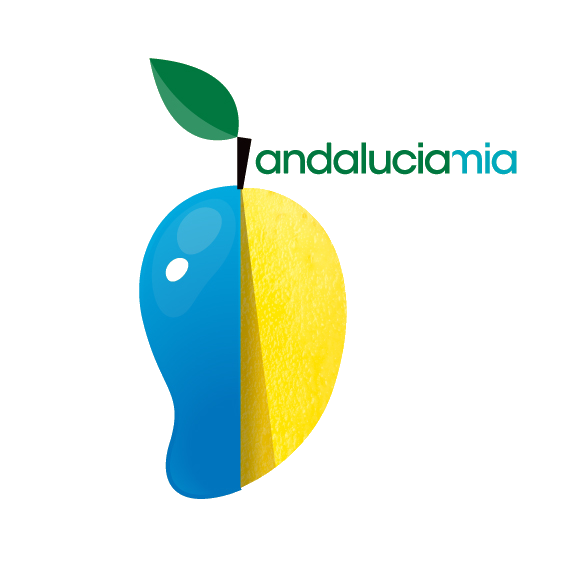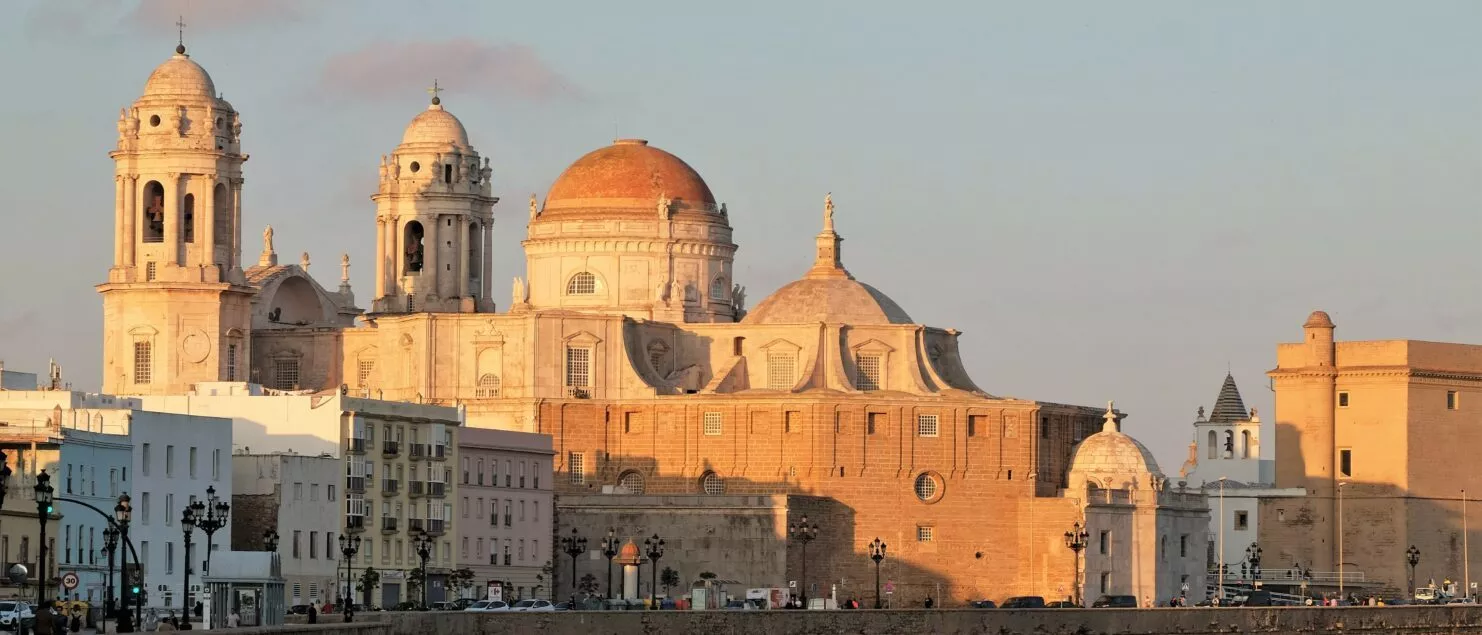What to see in Cadiz – here are 15 must-see places
Cadiz, a city to see and even more to experience
In this article you’ll find all the information you need to visit and see the best of Cadiz:
- A few words about Cadiz and its origins
- Where is Cadiz?
- What can you visit in Cadiz -15 essential sites to see – ?
- Lord Byron’s platonic love for Cadiz
- What can you do in Cadiz?
- Book accommodation
- What to see around Cadiz
- Some useful links (car hire, other ideas for visits)
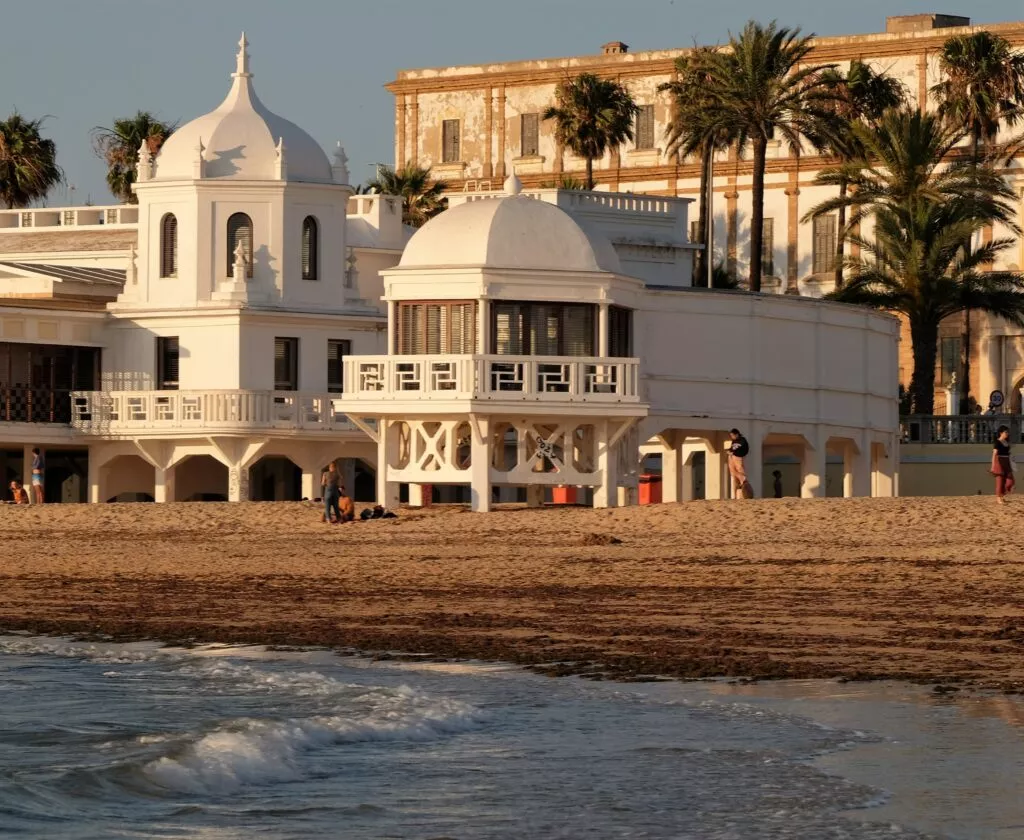
A few words about origins of Cadiz before you see it
To visit Cadiz is to visit the oldest city in Europe. The city is over 3,000 years old and was founded by the Phoenicians around 1100 BC.
There’s so much to say about the history of Cadiz and the people who inhabited it that we’ll be sharing a few facts and figures along the way.
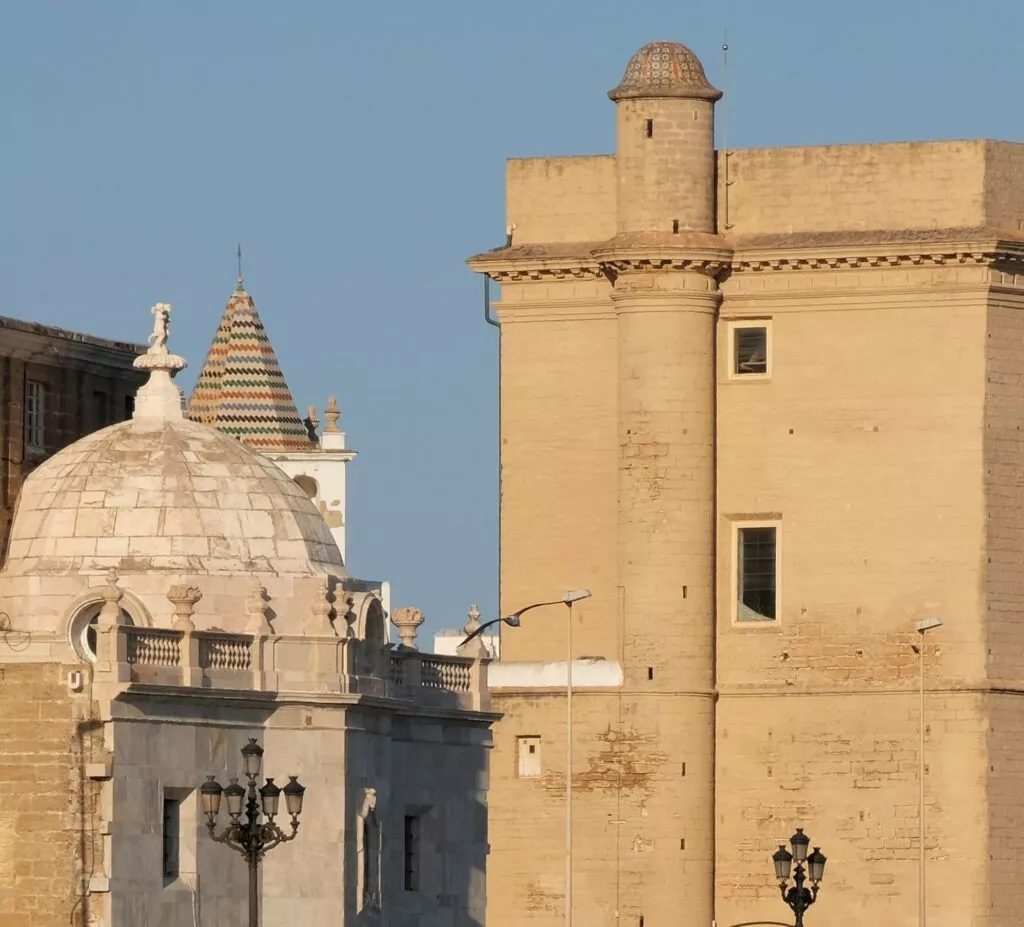
For the moment, here’s a list of the names given to the city throughout its history, to give you a clearer idea of its richness. I’ve also added a few photos of Cadiz, the mere sight of which takes us back in time.
It’s the city in Andalucia where you’re most likely to find yourself with your head in the air, looking up at the towers and the pure light that creates such beautiful colours….Cadiz is indeed the capital of the Costa de la Luz!
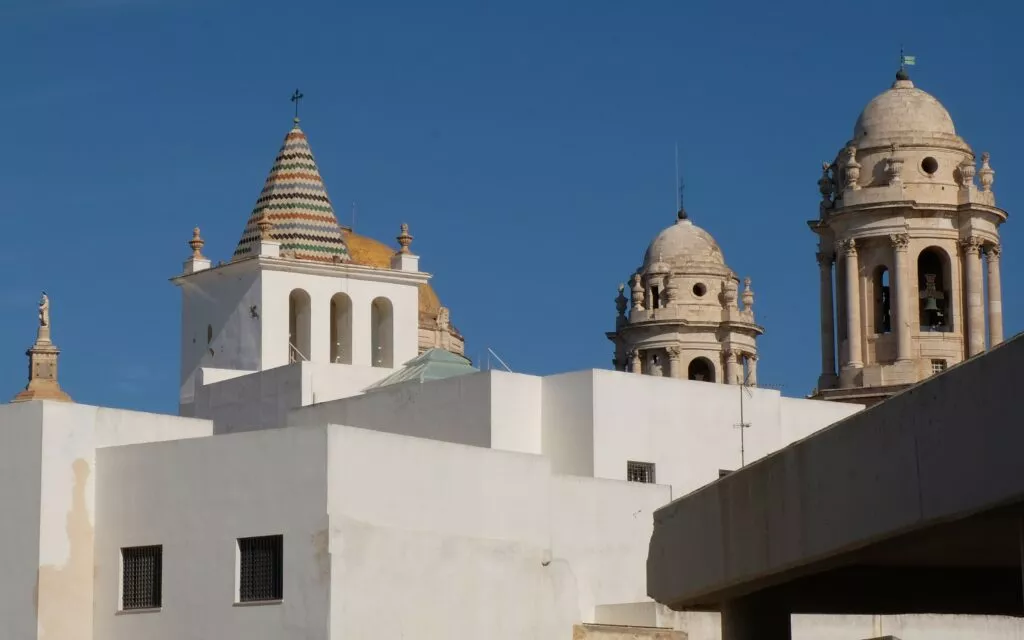
Gadir
When Cadiz was founded by the Phoenicians, it bore the name Gádir: 𐤂𐤃𐤓(𐤀), meaning castle or fortress (a similar name can be found in North Africa in the Tamazight language with the town of Agadir in Morocco).
Gadeira
During the Greek period the town would bear the name Gadeira: Γήδειρα. We find writings by Herodotus with this name.
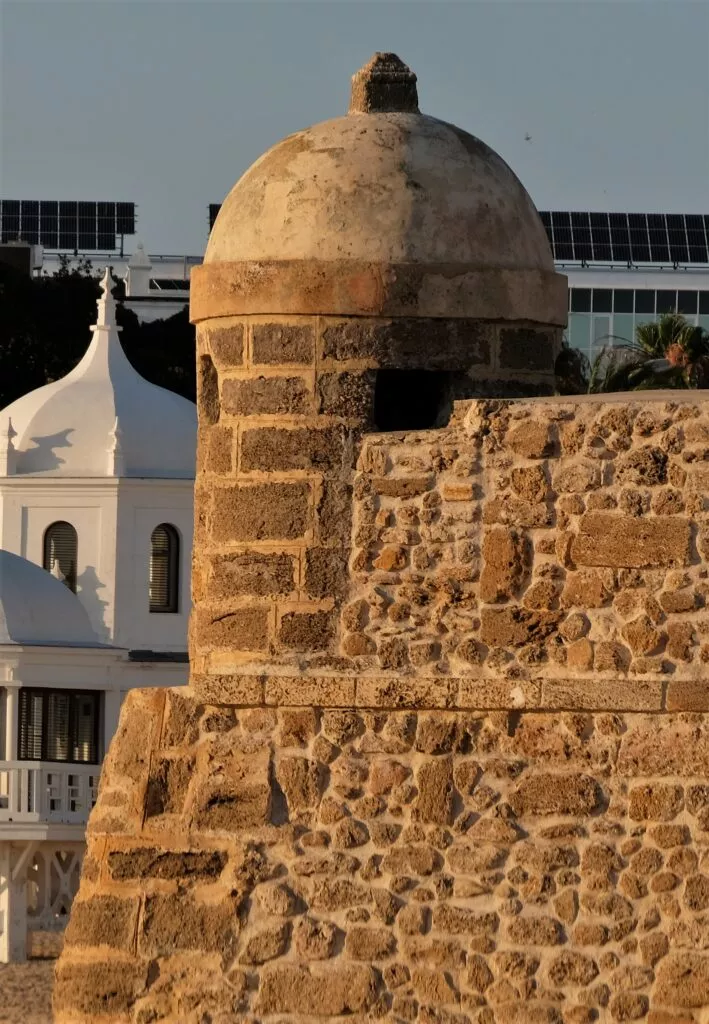
Gades
Then the town, in Roman times would take the Latin name of Gades. The name of the town can be found in Cicero‘s Naturalis Historia, or others by Pliny the Elder.
The actual name of the inhabitants, gaditanos, comes directly from the Latin of the time: gaditanus.
Qādis
After the Romans….the city was conquered by the Byzantines (522) and then by the Visigoths (620). Another 100 years or so later, the Umayyads conquered the city (711/712), which changed its name once again (the statue and temple of Hercules were destroyed at this time).
It was renamed Qādis: قادس
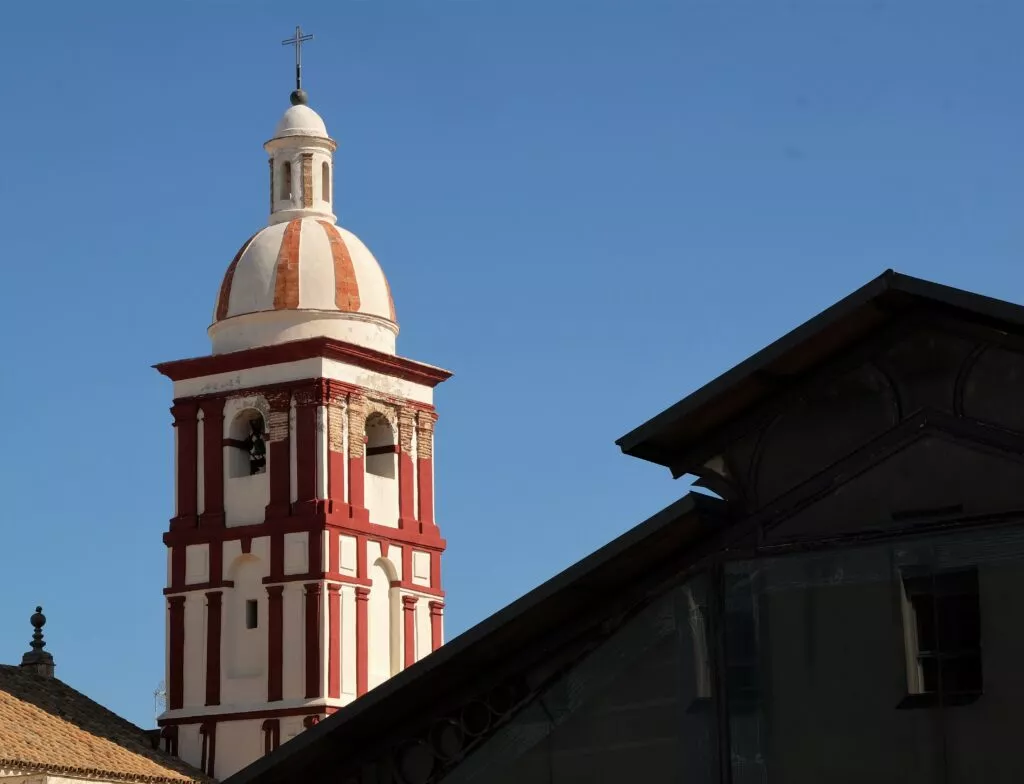
Cádiz
After the reconquest by the Catholic kings, the city will take the name of Cádiz.
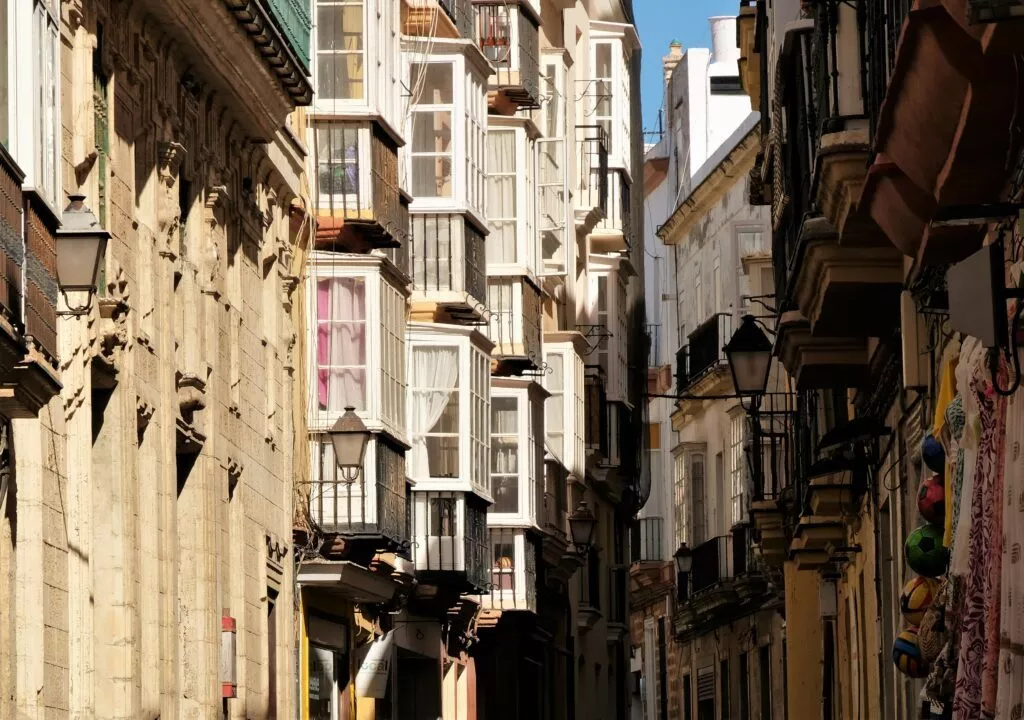
Where is Cadiz in Andalucia?
What to see and visit in Cadiz?
- The Cadiz market – El mercado central de abastos –
- The Roman Theatre
- Plaza de España – Plaza de España –
- La Caleta beach
- The city walls of Cadiz
- The Cathedral of Santa Cruz de Cádiz
- An unusual alleyway steeped in history…
- The Arch of the Rose
- Genoves Park
- Church of Nuestra Señora de la Palma
- The watchtowers
- The Constitution of 1812 Bridge
- Museum of Cadiz
- Avenida Campo del Sur
- Torre de Tavira
Cadiz is always enchanting, with its light, the friendliness of its people, its colours, its history and its traditions.
Cadiz market – El mercado central de abastos –
Located in the Plaza de la Libertad, it’s a must-see. And it’s a good place to start the day.
It’s open Monday to Saturday from 9am to 3pm.

Here you’ll find greengrocers and a delicatessen vendor, whose shop is not to be missed:
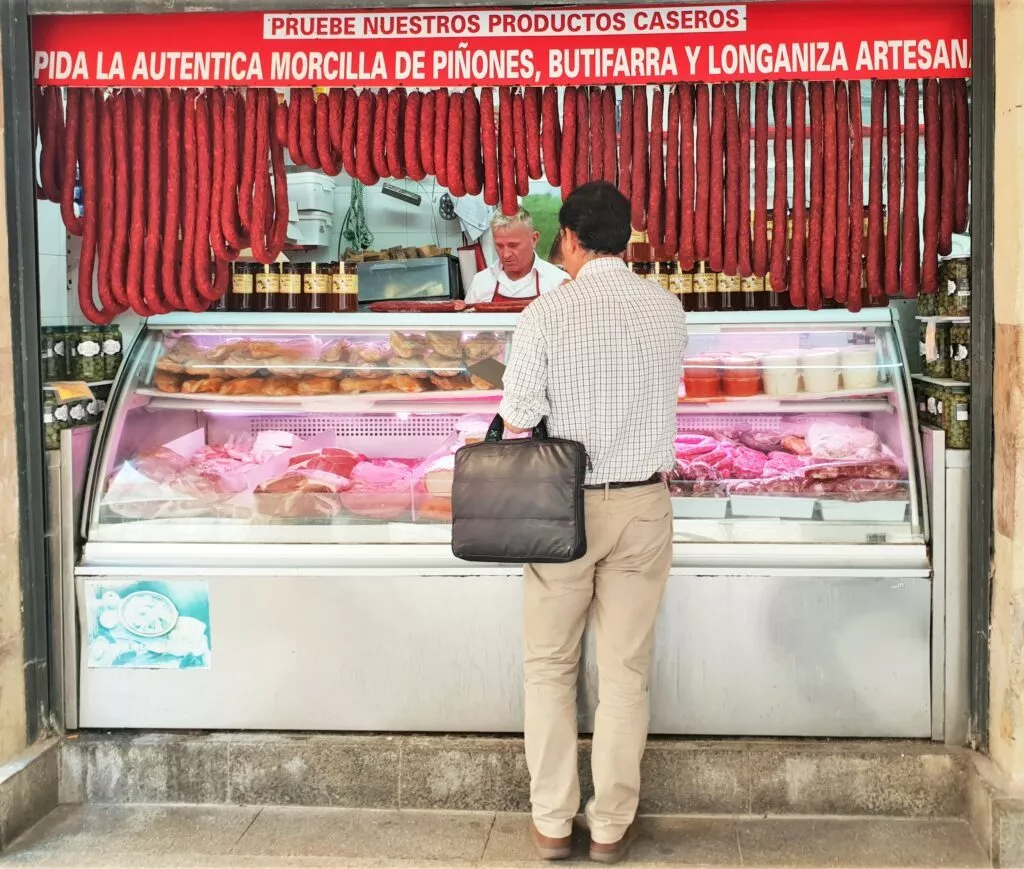
Most of the market is devoted to freshly caught fish. There are many varieties of fish.

The king fish is, of course, the so-called bluefin tuna (Atun rojo).

Among the varieties, the absolute reference in Cadiz is the Almadraba bluefin tuna.

Almadraba is a traditional fishing technique that dates back … 3000 years old, inherited from the Phoenicians. Its name, however, comes from the Arabic-Andalusian almaḍrába.
Strolling through the market, you can eat a few small fried prawns, sold in a “cartucho“, for 2 euros. In Malaga, you can find the same cartuchos but with almonds, almendras tostadas.
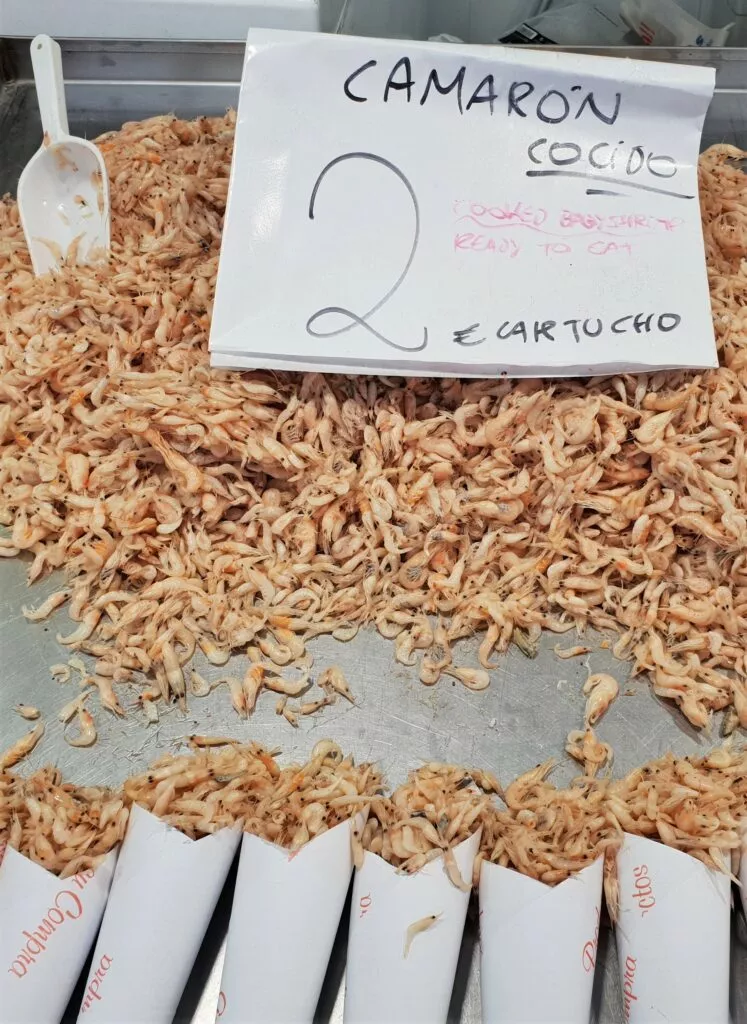
Outside the market is a great place to soak up the city. There are several small bars and restaurants where you can eat tapas, sitting or standing.
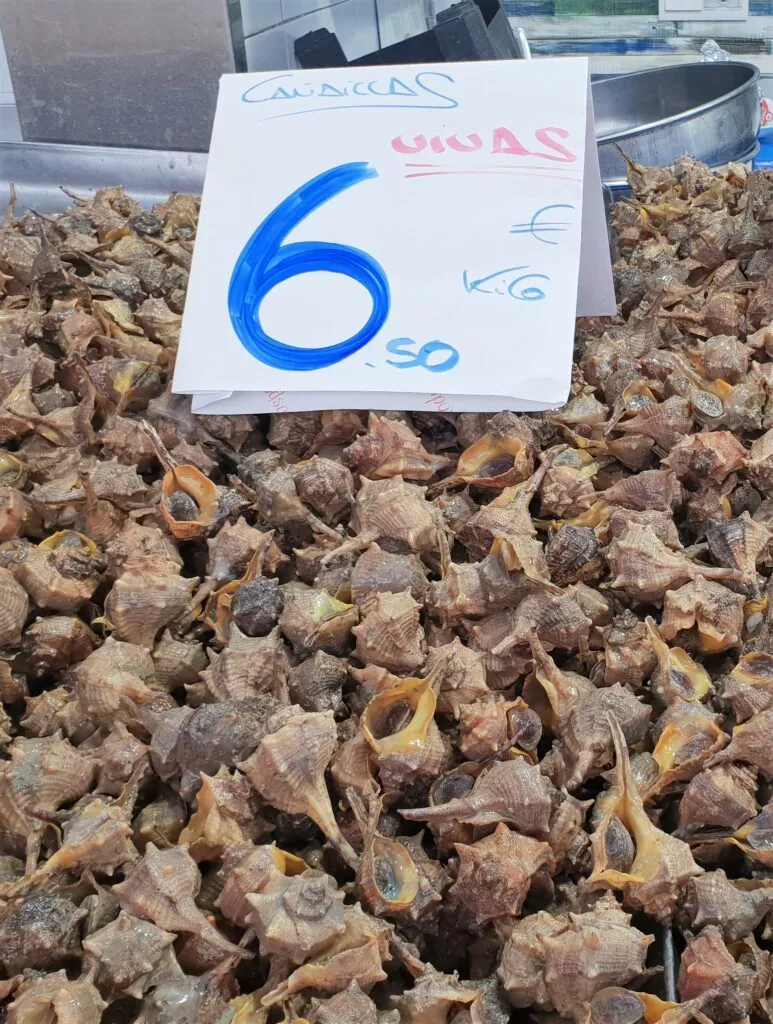
The Roman Theatre a historic site to see in Cadiz
Cadiz’s Roman theatre, located in the barrio del Pópulo, is quite exceptional. It was discovered only recently, in 1980. The theatre was called Theatrum Balbi. It was the Roman governor Balbus the Great who gave it his name. It was built in 70 BC.
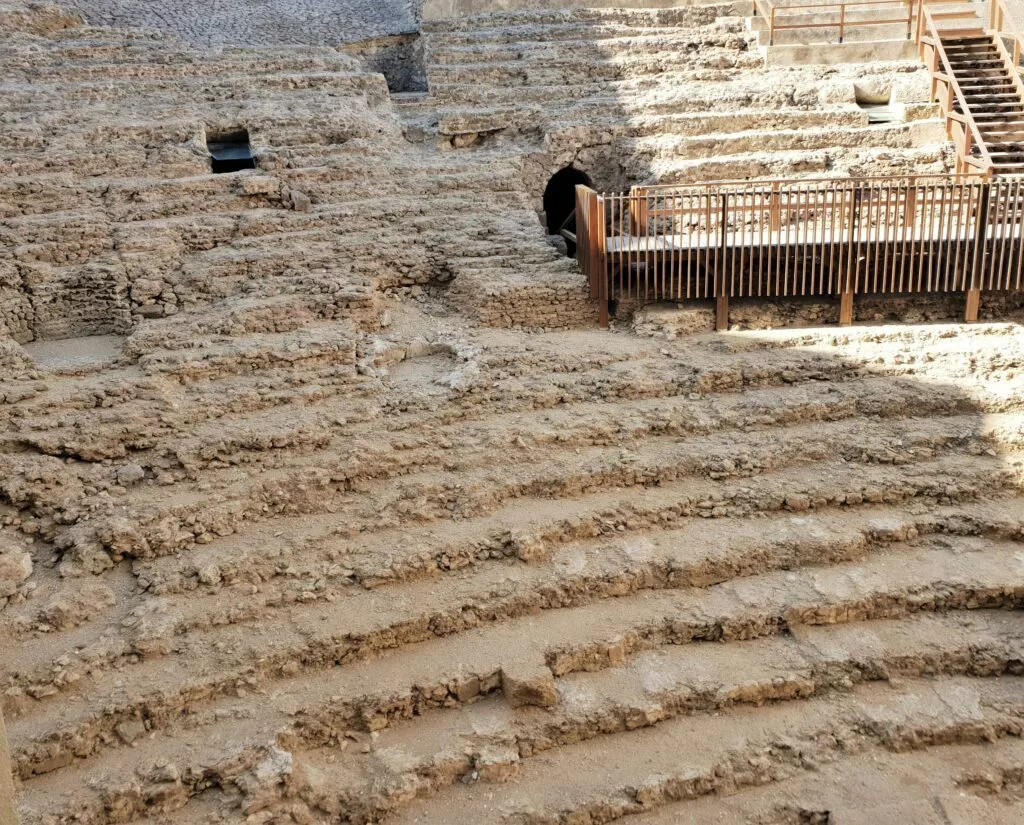
Not only is it the oldest theatre in Roman Hispania, it is also one of the two largest in Spain. It had a capacity of 20,000 seats for an estimated population of 50,000.
Below, the alleyway where you can see the Roman theatre as in the photo (there is, of course, access from the seafront for visitors). This hidden alleyway is just 2 minutes from the Arco de los Blancos.
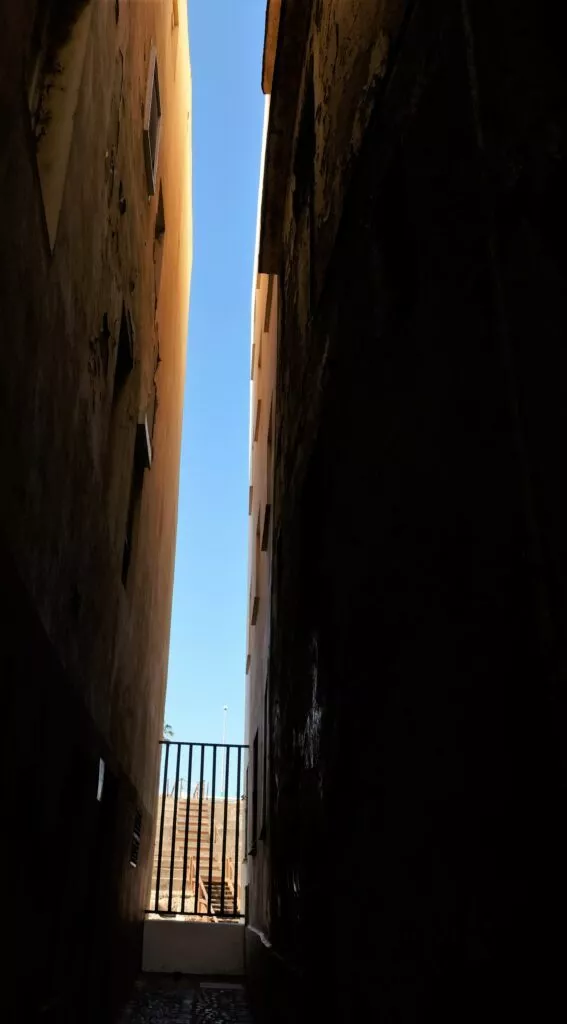
The Square of Spain – Plaza de España –
This is an emblematic square in the Gaditana Capital.
Here you can admire the monument to the Constitution of 1812, the Monument de la Pepa.
Among the various sculptures in homage to La Pepa, I find the one below to be particularly beautiful:
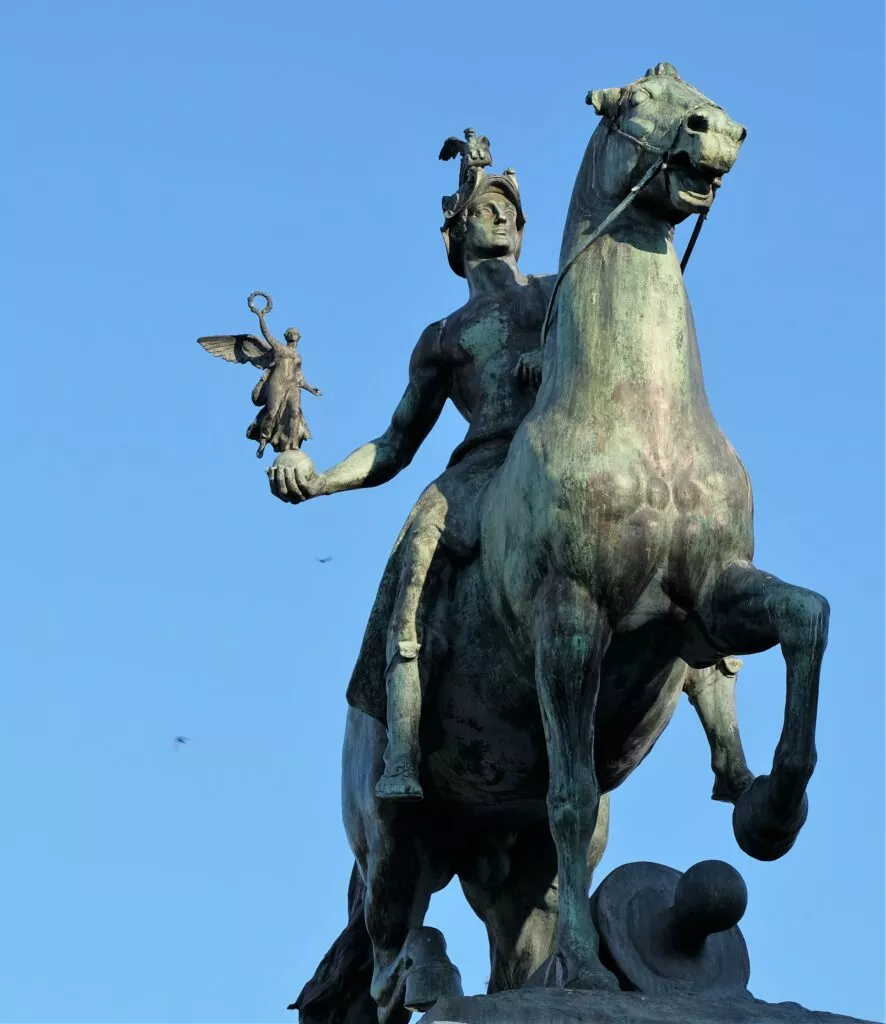
Interestingly, the first Spanish constitution was being drafted at the same time as Napoleon’s troops were laying siege to Cadiz (from 1810 to 1812), right in the middle of the Spanish War of Independence.
La Caleta beach a little wonder to see in Cadiz
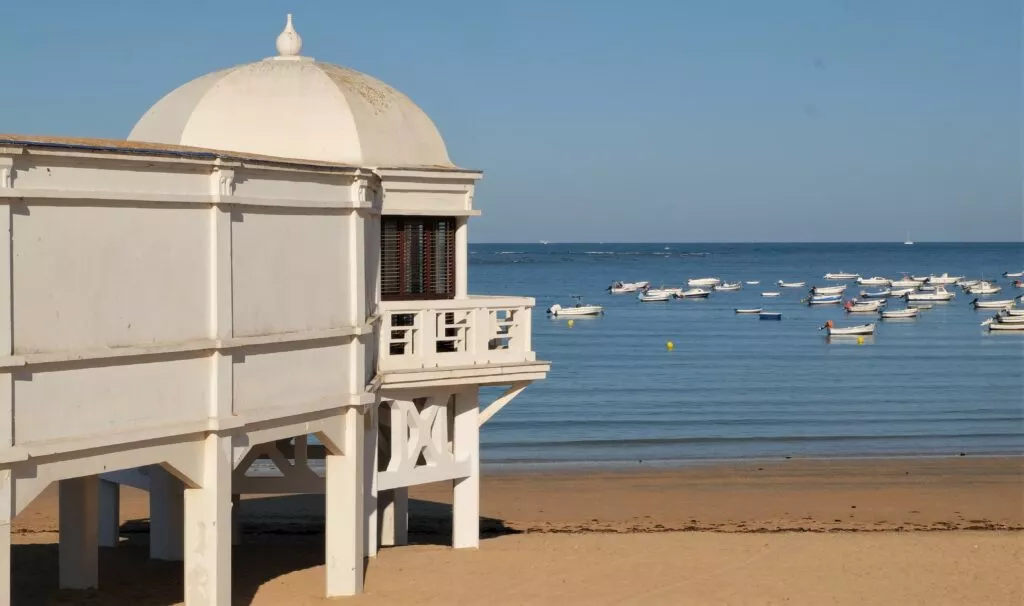
La Caleta beach is the emblematic beach of Cadiz. However, there are 2 other beautiful beaches in the city, including the famous Cortadura beach.
The best moments on this beach are sunset, although I wasn’t lucky enough to see the famous green flash 🙂
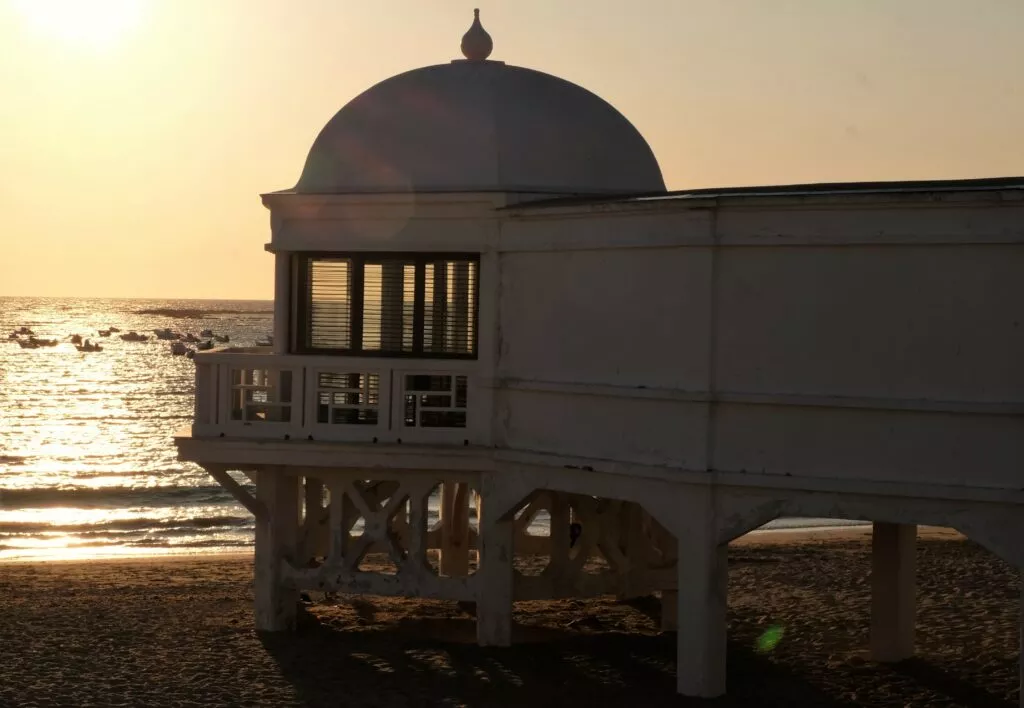
…and when the beach is at low tide.
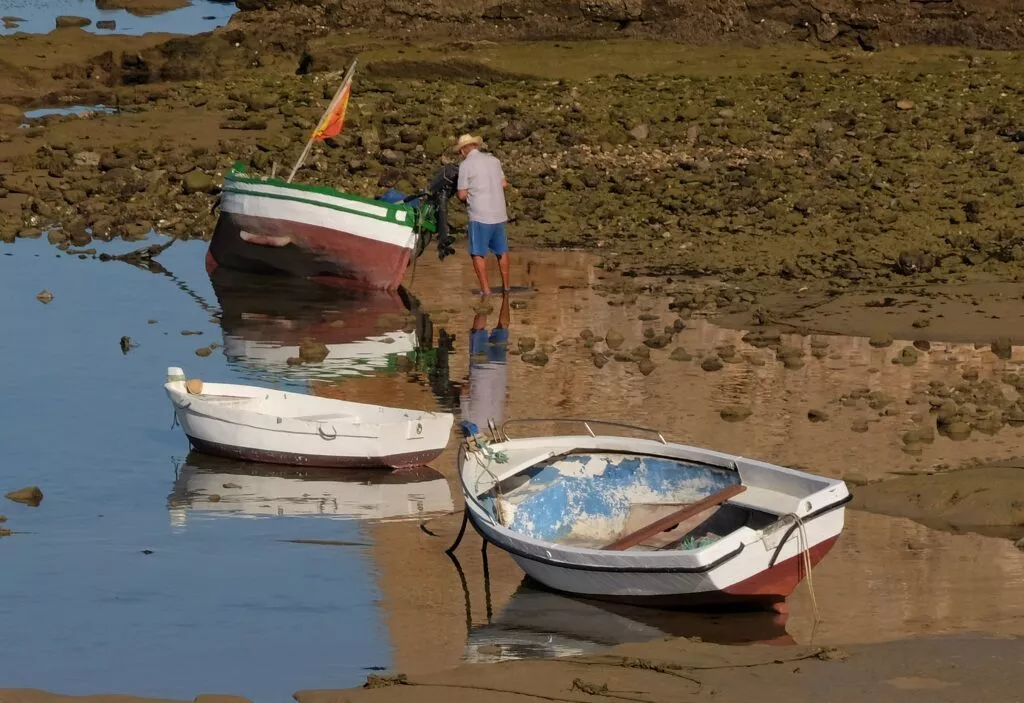
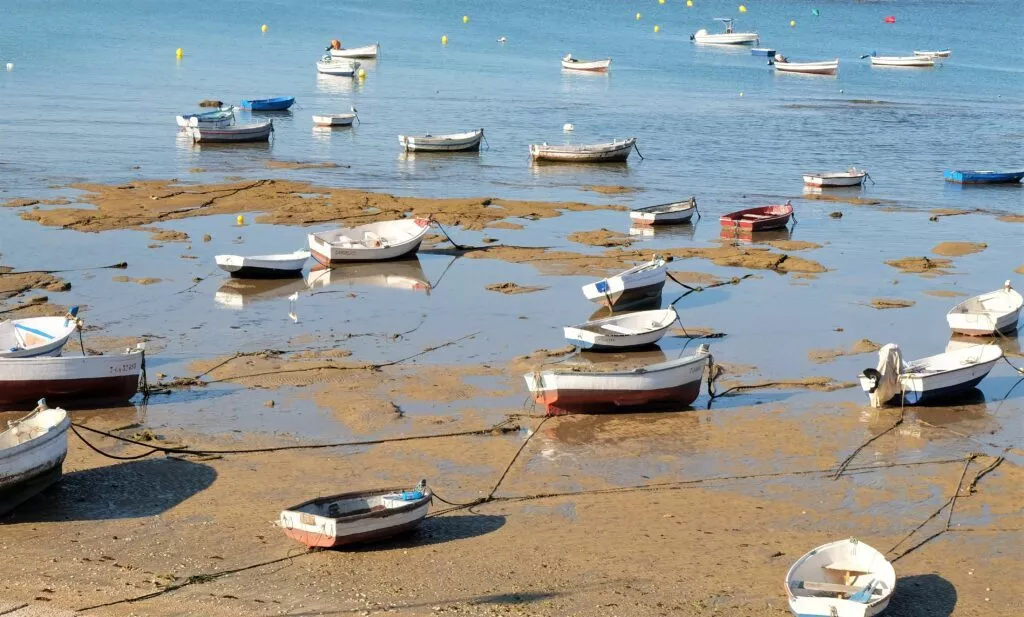
This beach has inspired many artists. composer Isaac Albéniz is one of them with Suite española N°1.
It has also inspired film scenes:
- Wedded by Witchcraft by Carlos Saura, in 1983
- Die Another Day, a James Bond film starring Pierce Brosnan, released in 2002
- Manolete, starring Adrian Brody and Penelope Cruz, in 2008
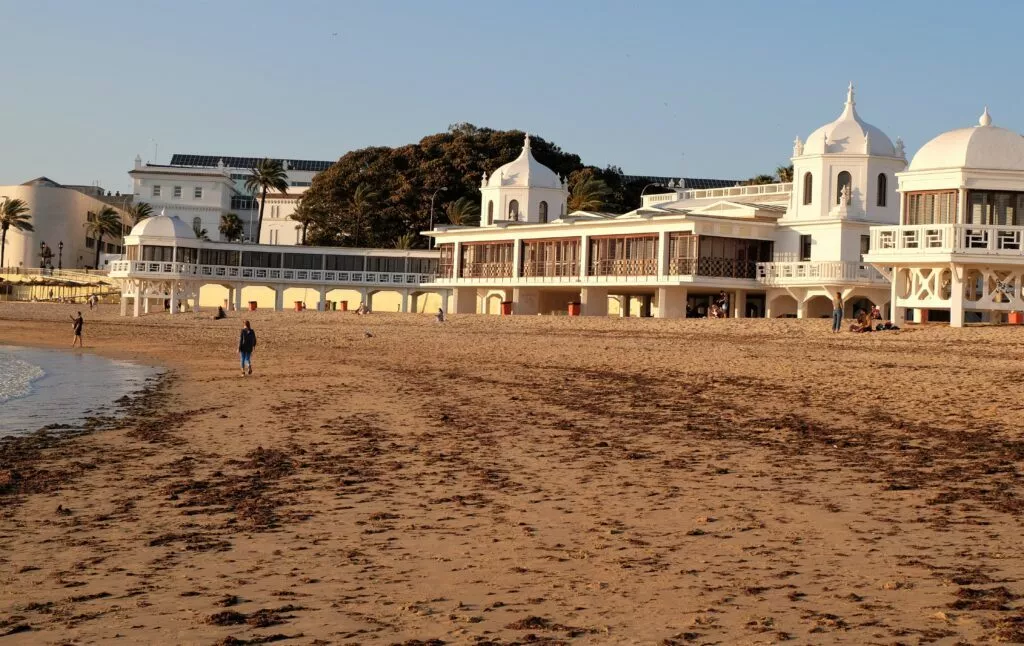
The walls of Cadiz
Cadiz has several walls from different periods (the one below, Arco de los Blancos, has Roman origins and has been modified several times). To put this into context, in the 18th and 19th centuries, Cadiz was surrounded by a wall, both on land and at sea. Numerous cannons and soldiers were positioned all around the city.
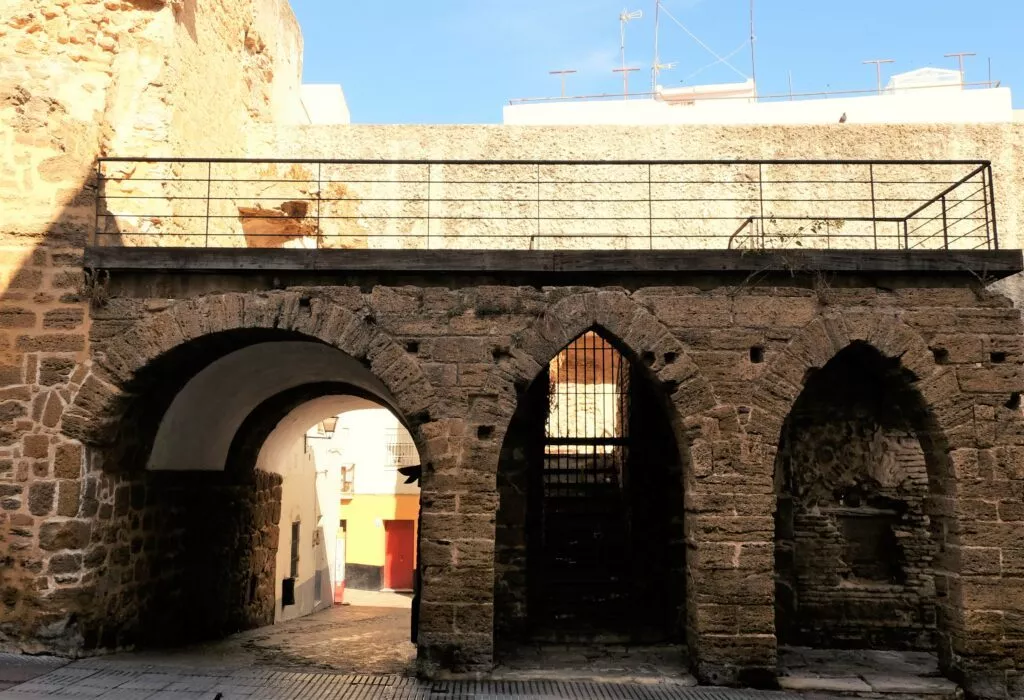
In addition to these walls, there are the castles of Santa Catalina and San Sebastián, which surround La Caleta beach. Finally, Cadiz boasts the bastions of Santiago, Candelaria, Bonete, Orejón, Mártires, Capuchinos, San Roque and Santa Elena, as well as the San Felipe battery.
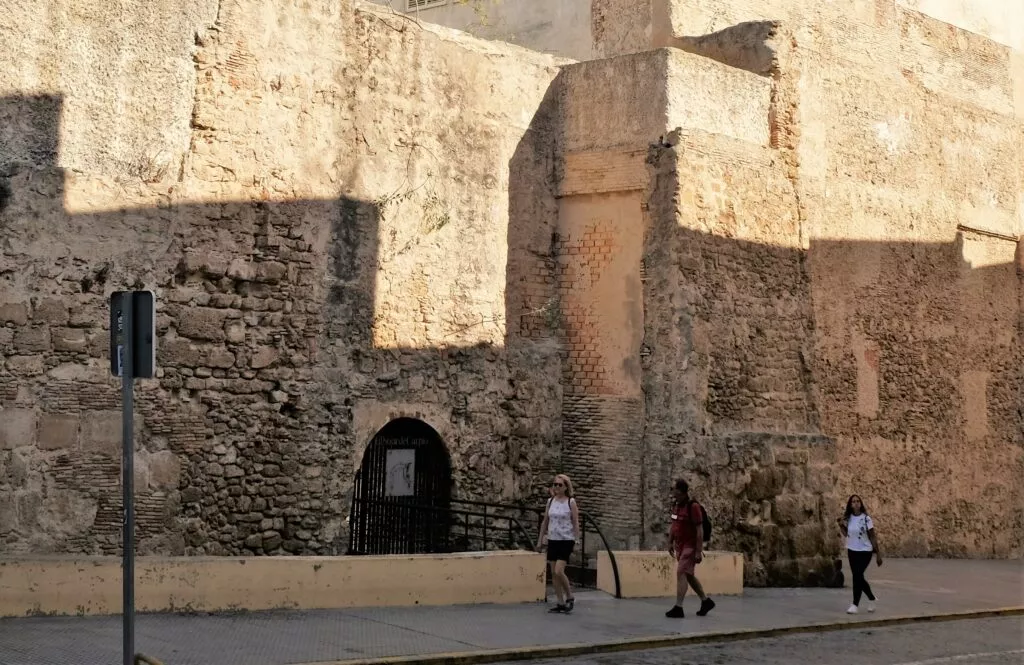
Older walls can still be seen inside the city, particularly in the “barrio del populo”. The city built walls as its population grew.
Cadiz Cathedral of Santa Cruz
The Cathedral was built on top of an older cathedral that was destroyed by fire. It was completed in 1838 and is partly located on the seafront. It is known locally as “Santa Cruz sobre el Mar” and “Santa Cruz sobre las Aguas”.
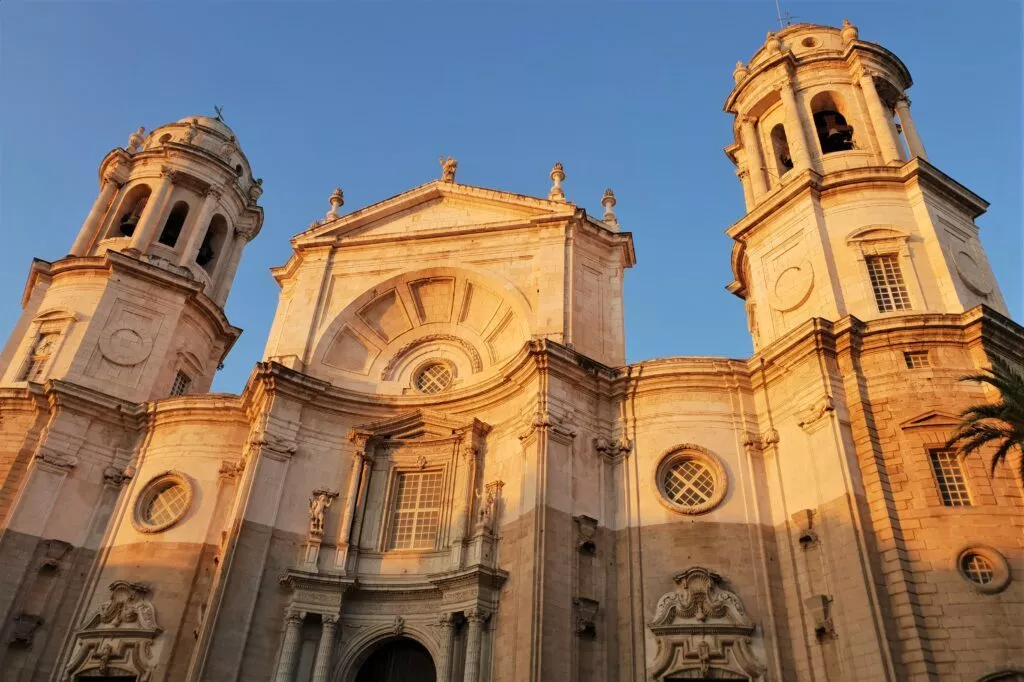
The interior features Baroque, Rococo and Neoclassical styles.
However, this cathedral has a special feature: its roof is yellow.
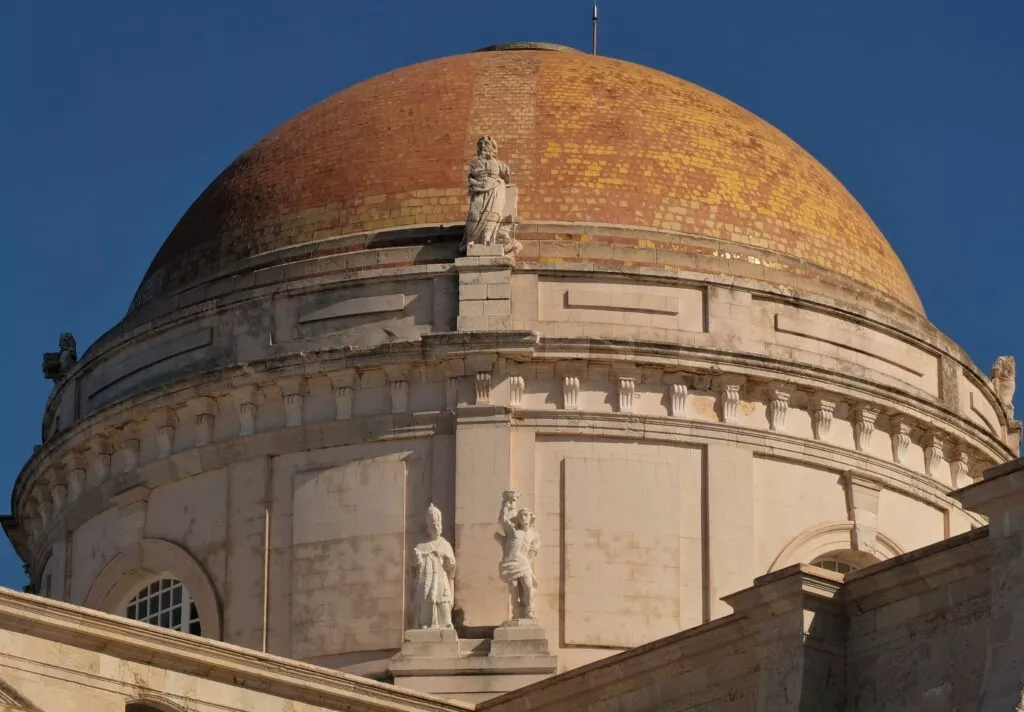
It is the only Christian temple in existence with this colour. However, this colour is used quite often in the Muslim world.
An unusual alleyway to see in Cadiz
This is the pirates’ alleyway, Callejon de los piratas. It is located at the foot of the Cathedral. What makes this place unique is that it marks km 0 of the Pilgrim’s Way to Santiago de Compostela, but not only….
It is also km 0 of the famous Via Augusta.
The Via Augusta was the longest Roman road in Roman Hispania. It ran from Gades (Cadiz in Latin) to Narbonem (Narbonne), passing through Hispalis (Seville) and Corduba (Cordoba) and then along the coast from Valentia (Valencia), a distance of around 1,500 km. Once you reached Narbonne, this route enabled you to join the via Domitia to Rome.
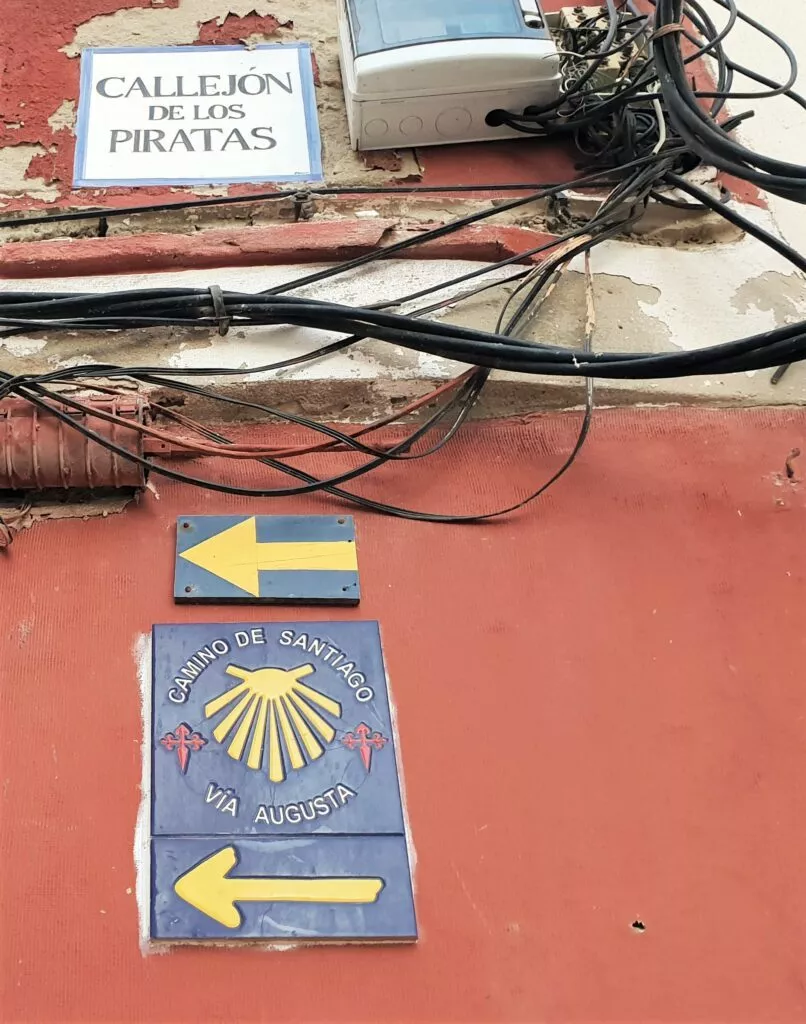
It was the Roman emperor Augustus who gave it its name, between 8 and 2 BC, after laying out the road.
Previously, it had been known as the Via Herculea and then the Hannibal Way. In fact, in 218 BC, Hannibal Barca, general of the powerful Carthage, decided to attack Rome. His route to Rome began in Europe, in Cadiz!
The alleyway is located between the Cathedral and the Arco de la Rosa (Arch of the Rose) below:
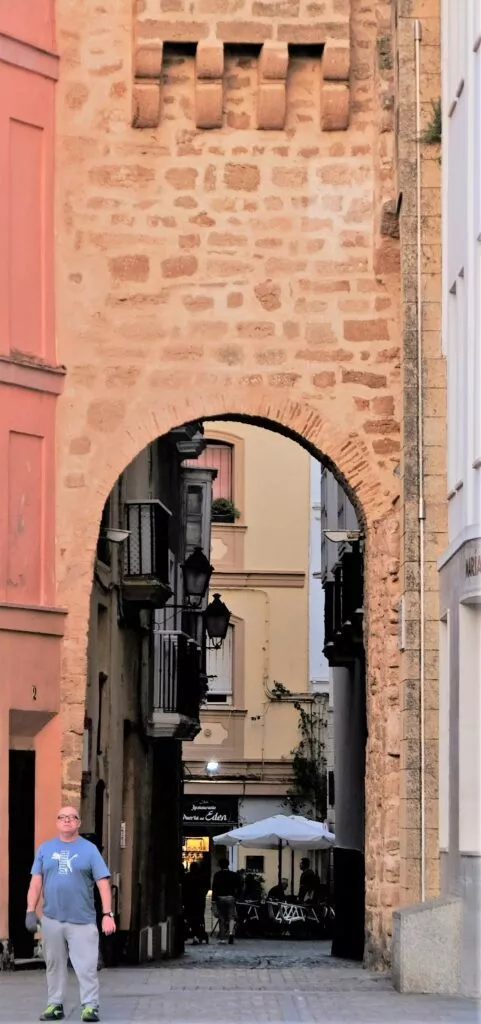
Genoves Park
The part of the city where Parc Genoves is located is very green indeed. There are several parks along the seafront, including Parc Genoves, with some beautiful specimens!
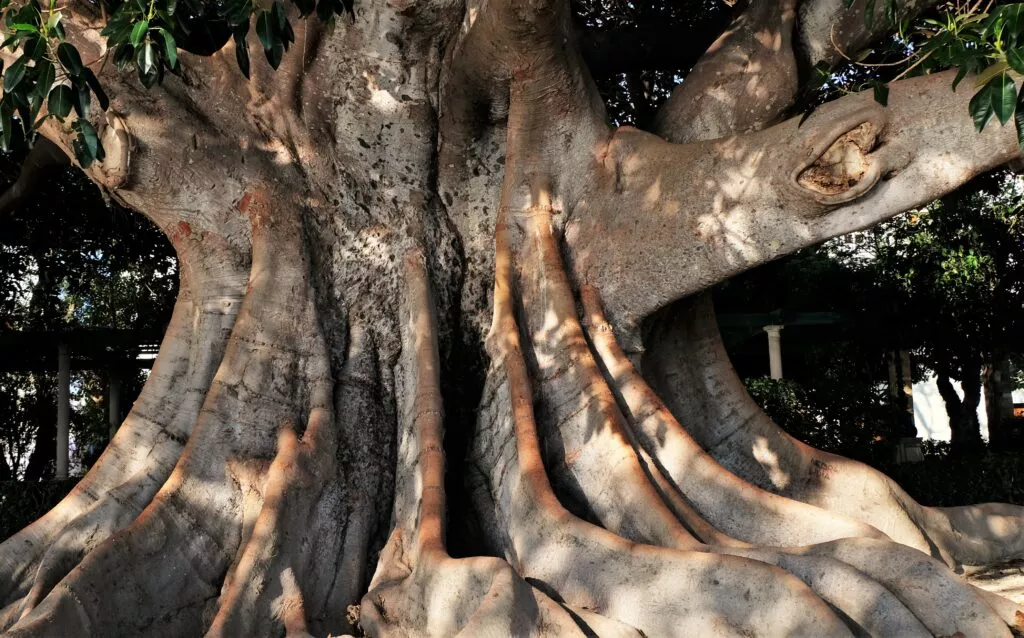
Genoves Park is very green and boasts a beautiful botanical garden (with plants brought back from the expeditions to the Americas in the 15th and 16th centuries) and is curiously located on a site that was previously very poor, from a biological point of view.
In fact, it used to be known as Paseo del Perejil, the Parsley Walk, in recognition of its sparse vegetation.
Parc Genoves is located between Avenida Duque de Nájera, Calle González Tablas and Paseo de Santa Bárbara. Here are the timetables for getting there:
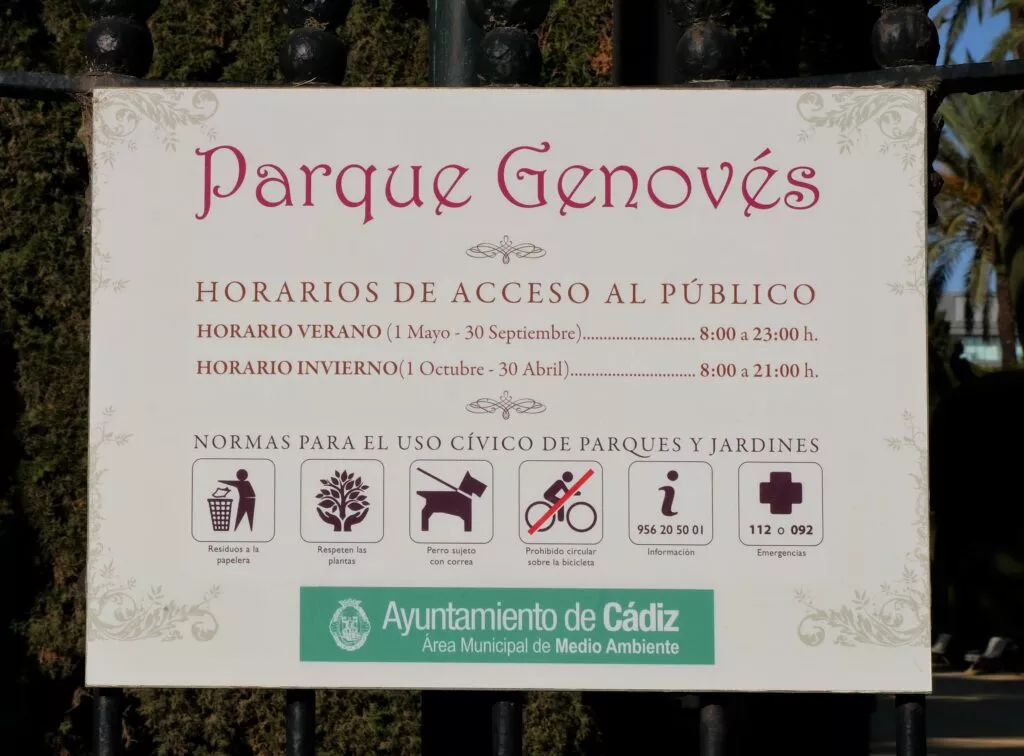
There are 2 famous spots in the park:
- La Gruta. Here you’ll find a small lake with a waterfall.
- a sculpture: a bust of the gaditano musician Manuel de Falla.
- The town’s theatre (which is the central venue for the famous Cadix carnival) now bears his name, and he is buried in the crypt of the Cathedral.
Nuestra Señora de la Palma Church
As everywhere in Spain, there are many churches. This one has a special history (or legend). It is located in the street of the same name, Calle Nuestra Señora de la Palma, in the quiet district of La Viña.
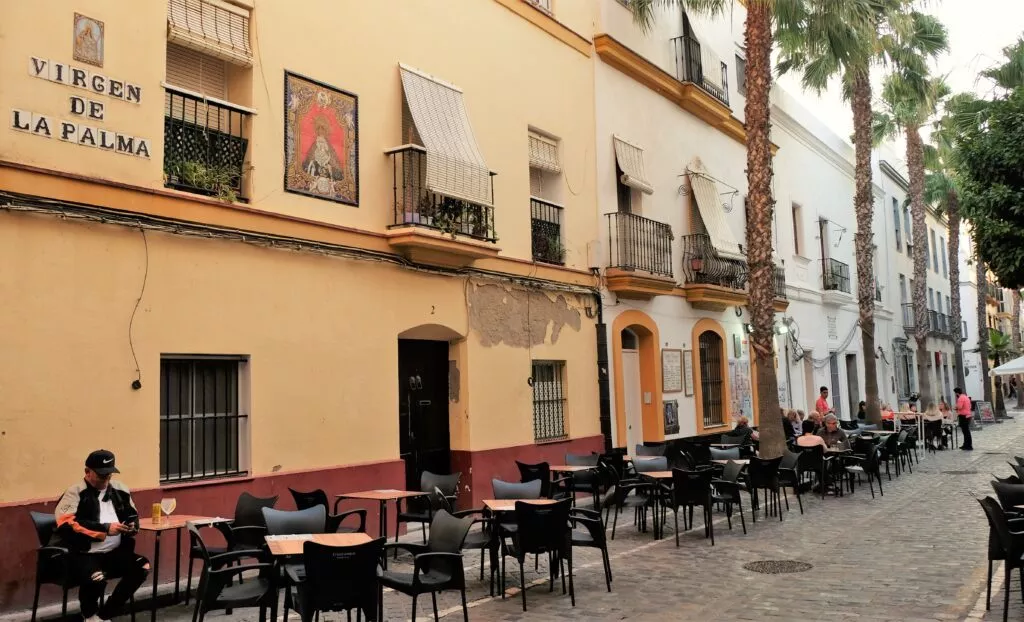
The origins of the church in La Palma can be traced back to the Capuchin order, and more specifically to Fray Pablo de Cádiz in the late 17th century. The image of this Virgin of La Palma is the object of special devotion for the local people.
She is credited with stopping the waters from washing over the entrance to the church during the tragic tidal wave of 1 November 1755.
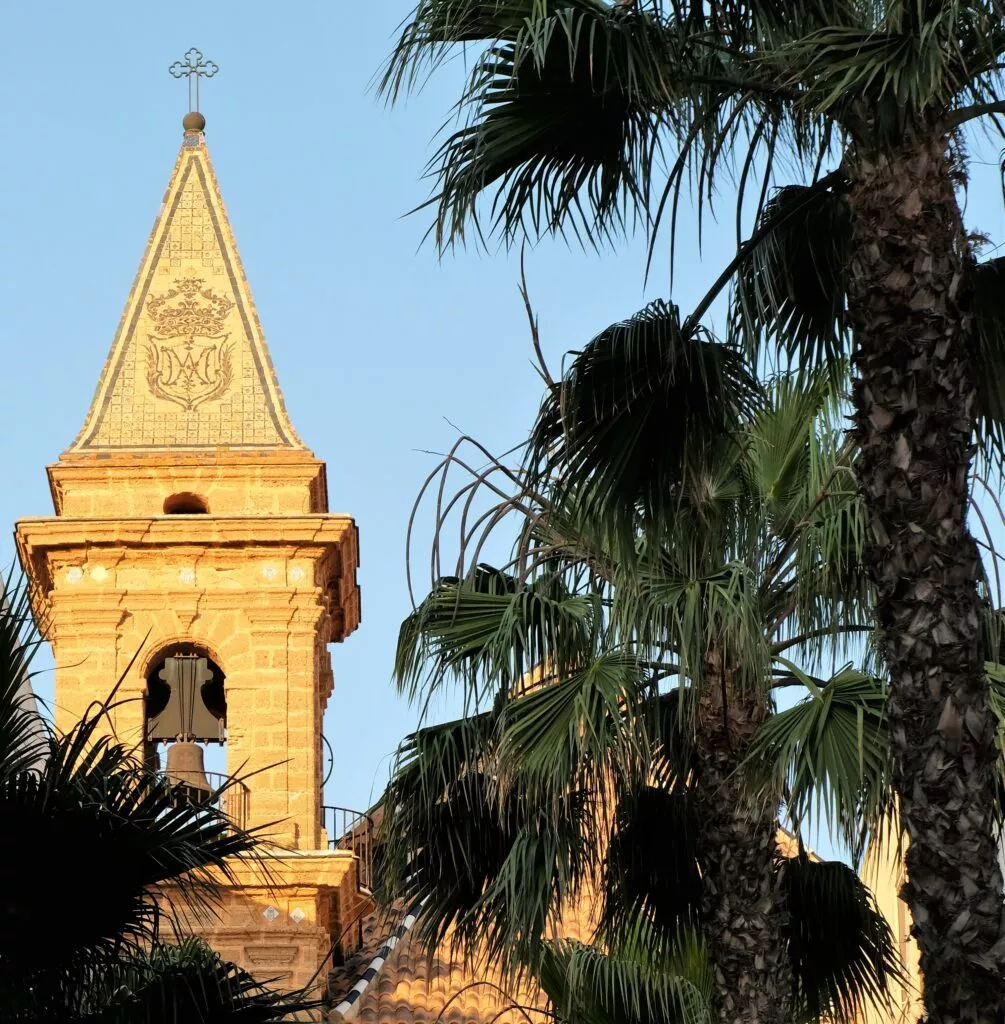
The watchtowers of Cadiz
To understand the history of these towers, we need to go back a little further. In 1717, it was decided to transfer the Casa de la Contratación from Seville to Cadiz.
Henceforth, the centre for managing trade with the Indies (the Americas and the Philippines) would be in Cadiz, which was to enjoy its golden century.
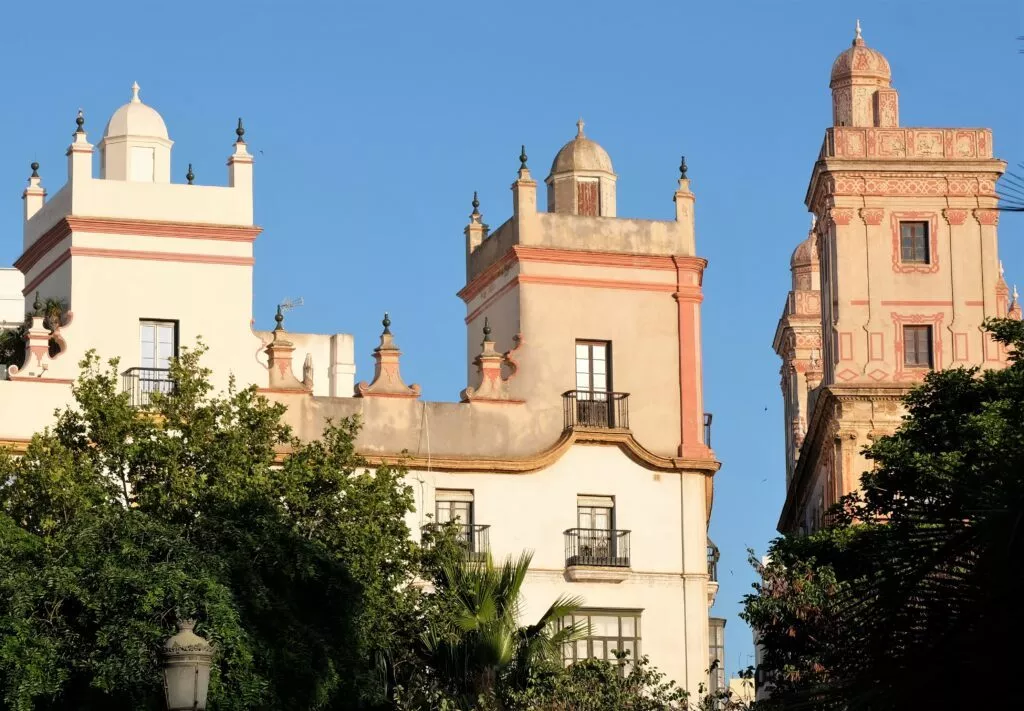
As many as 160 towers were built from the 18th century onwards, the first dating from 1685, and 130 remain today.
But what was the point of having a tower for a merchant?
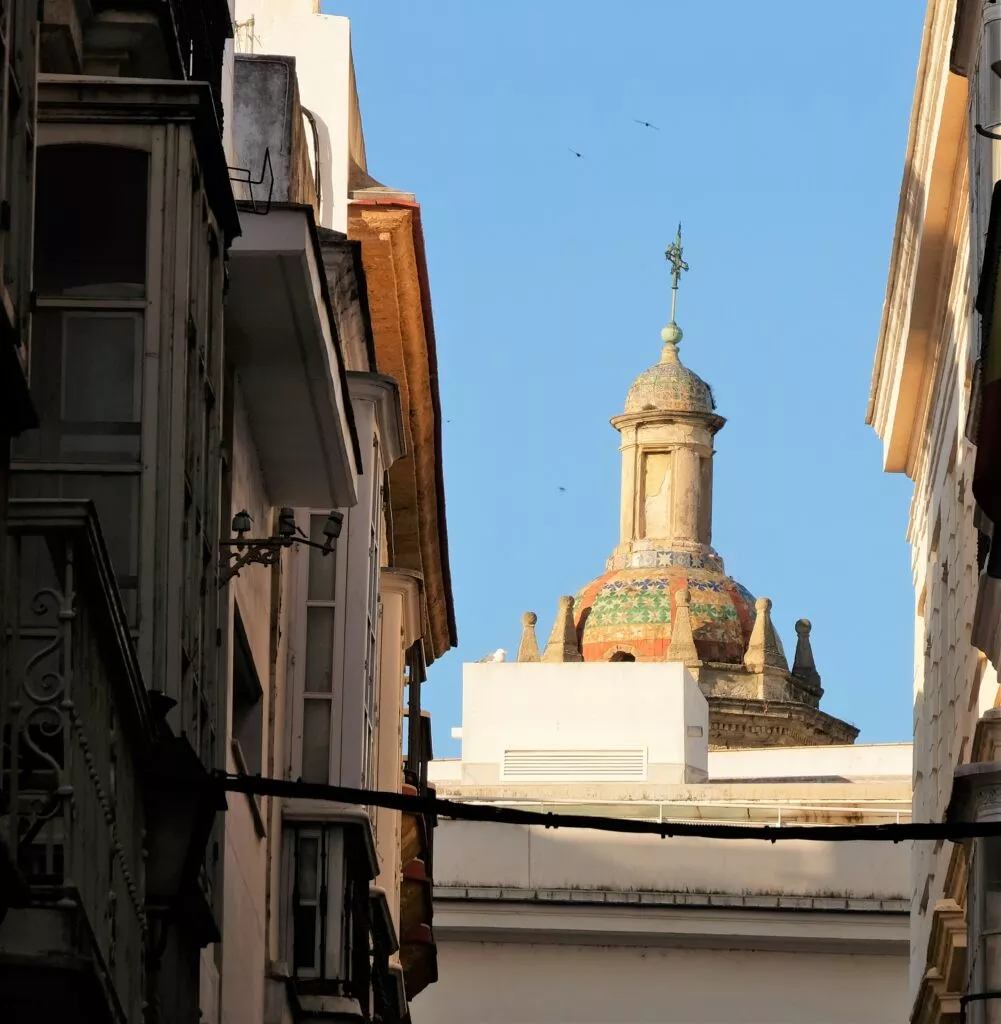
In fact, merchants began to build towers above their houses in order to keep an eye on maritime traffic and the arrival of their own ships from the Indies.
These towers were identifiable to the ships thanks to flags and pennants that fluttered in the wind.
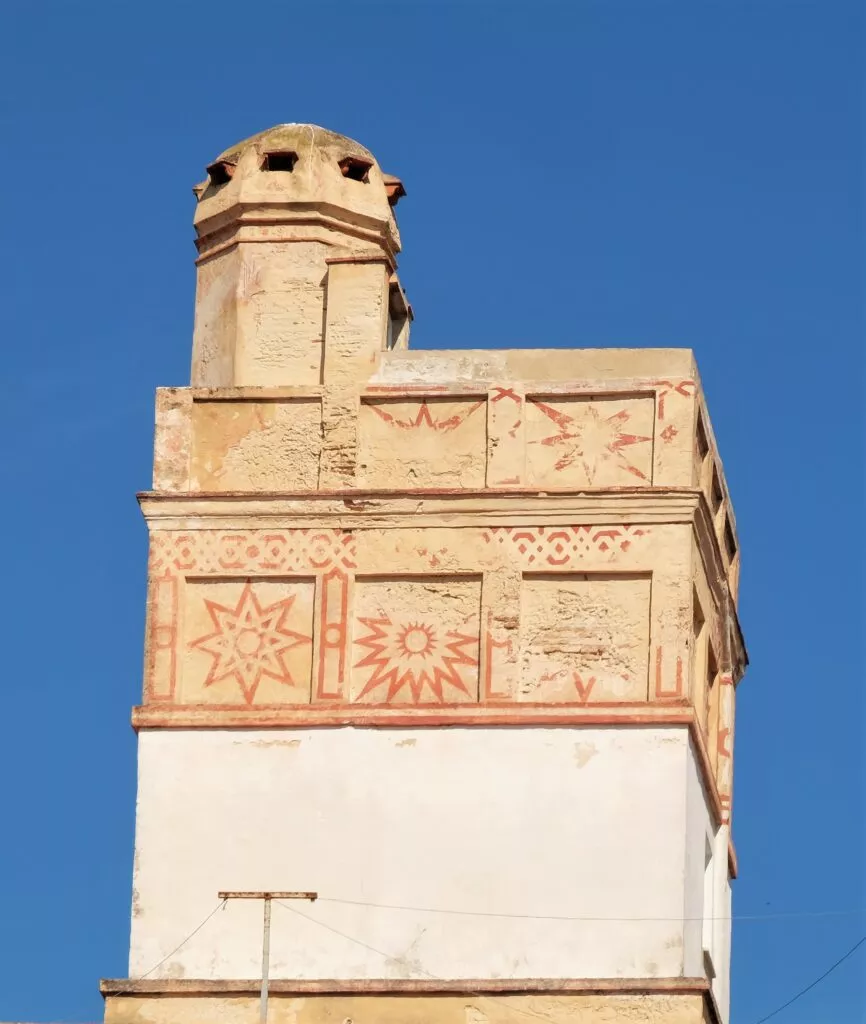
And with a long view on each side, it was possible to communicate. Everything was in coded message so as not to inform the competitors. Secret messages were made by hoisting certain flags and sending signs with a mirror.
This enabled the merchant-owner to know in advance the products in the boat, as well as their quantity and quality, so that he could start speculating.
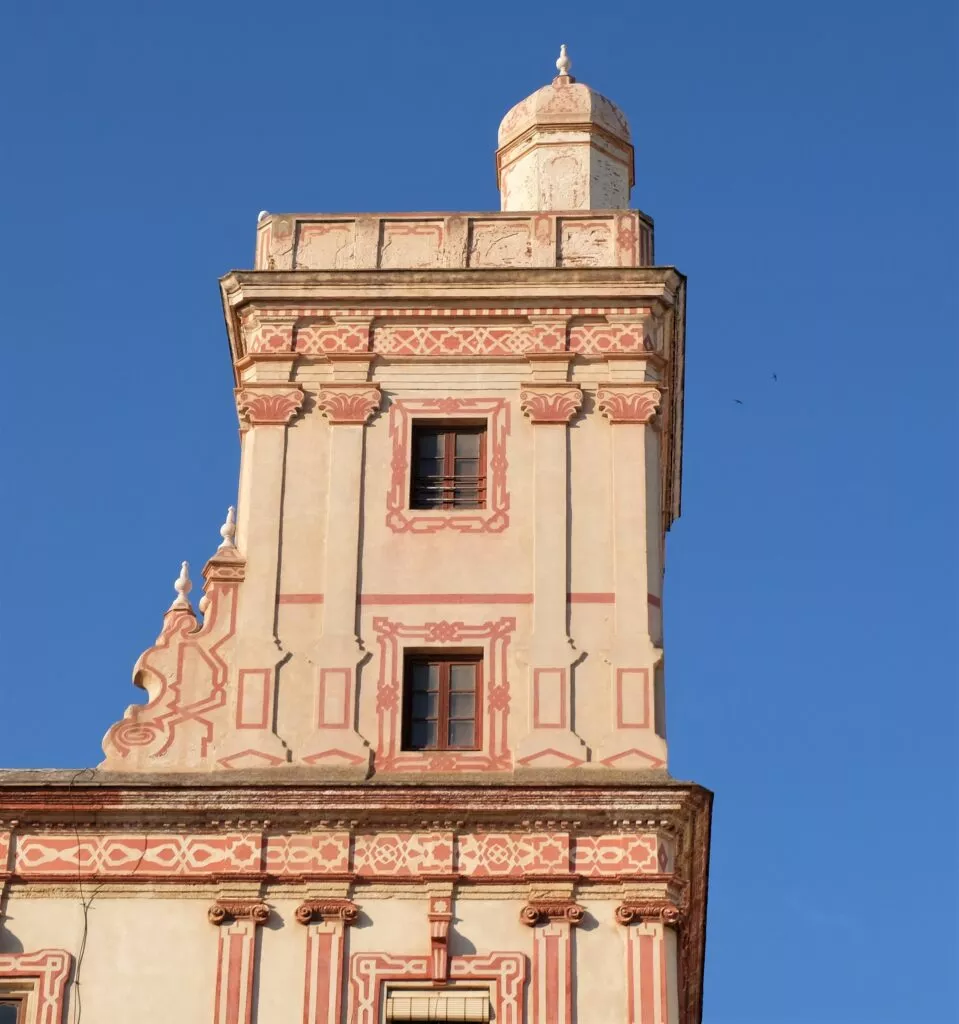
These towers were also a way of displaying one’s commercial success for all to see.
The 1812 Constitution Bridge
This bridge is also known as the “Pepa Bridge“. Pepa is the nickname given by the Gaditanos to the Constitution of 1812.
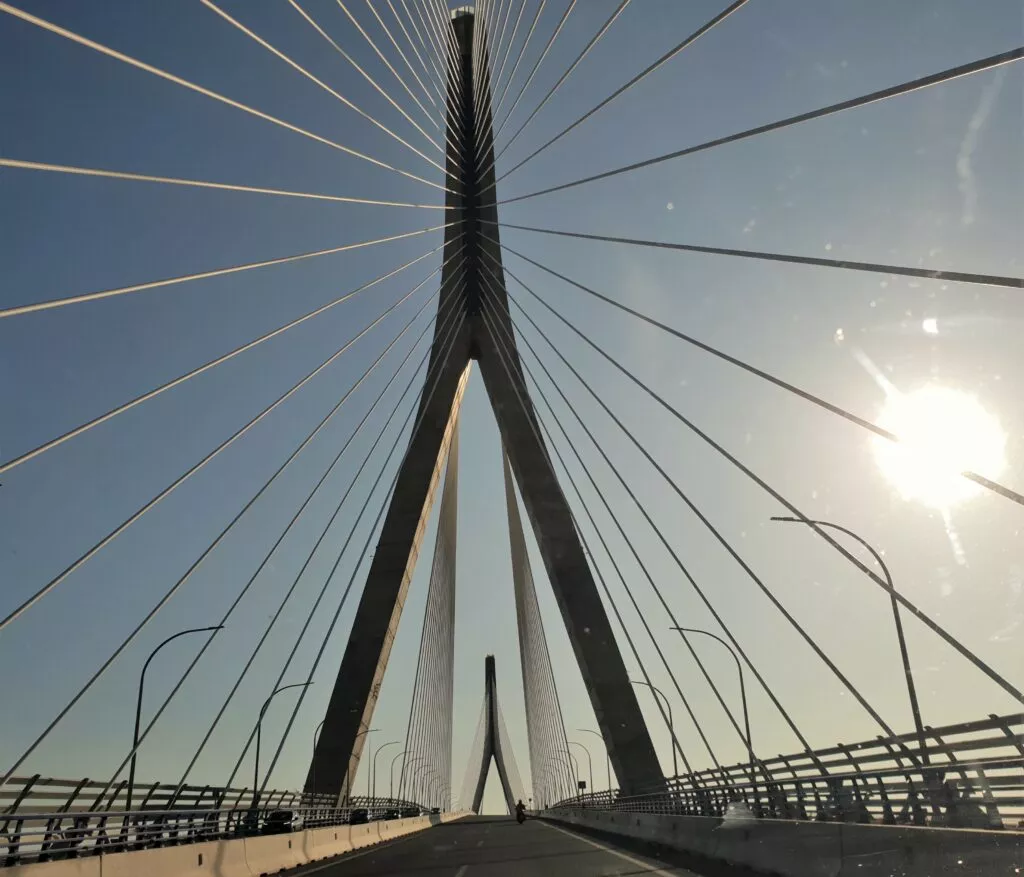
This magnificent bridge is the only way to get to Cadiz by car. Cadiz is an island linked to the mainland simply by an isthmus, where there is also a beach.
The Cadiz Museum
The Cadiz Museum is a concentration of the region’s history, from Phoenician times through Greek and Roman times to the last century. It is one of the most visited museums in Spain.
Avenida Campo del Sur
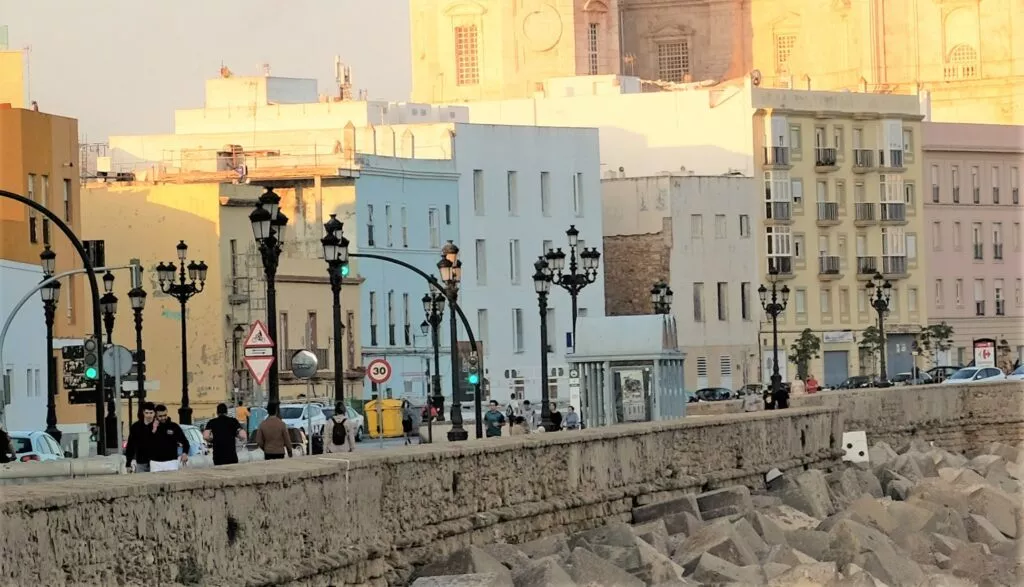
The Avenida Campo del Sur, which runs alongside the sea from the Viña district to the Cathedral, is nicknamed the Malecon, like the famous avenue in Havana, Cuba.
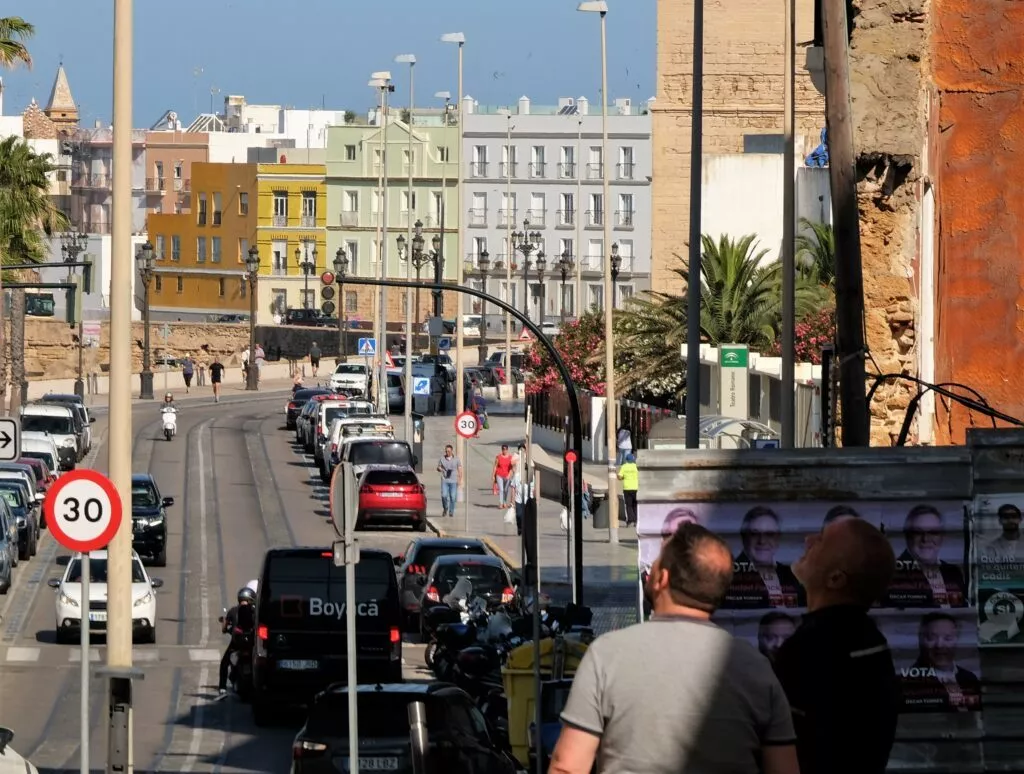
In certain respects, and given Cadiz’s age, it is easy to understand why it has been nicknamed Old Havana.
A few words about flamenco in Cadiz
It’s hard not to mention flamenco when talking about Cadiz. Of course, the Cadiz Carnival takes the spotlight more nowadays …
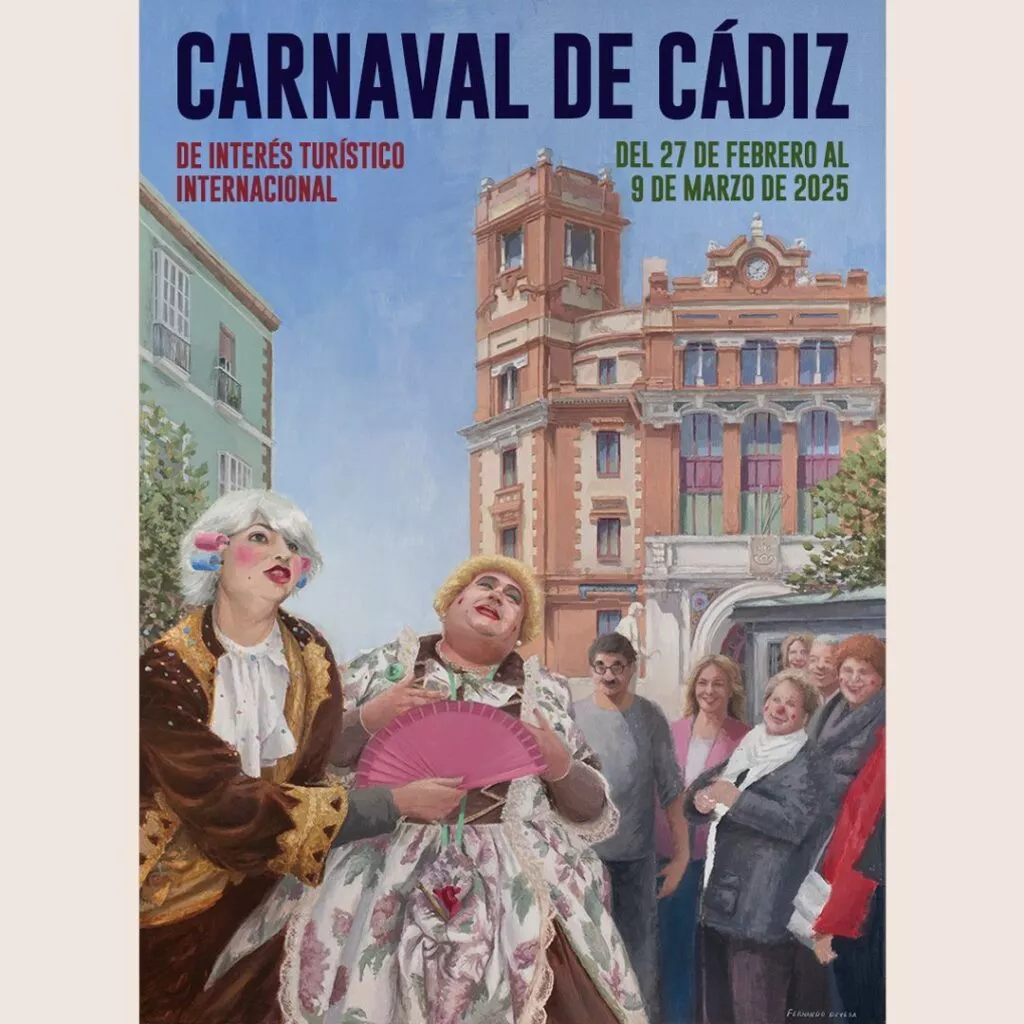
…but Cadiz is one of the cradles of flamenco, along with Seville and Cordoba.
Cadiz and its province have seen the birth of some of the greatest flamenco artists, including Camarón de la Isla , Paco de Lucía , Perla de Cádiz , Paquera de Jerez , Terremoto and los Sordera.
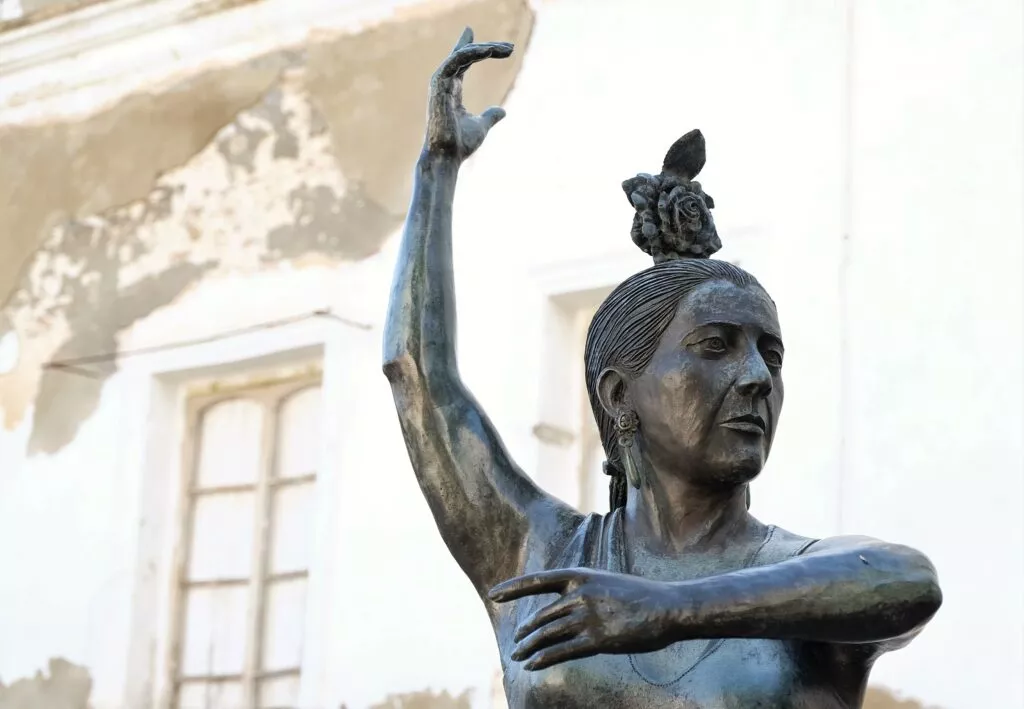
The city boasts a number of flamenco peñas, a dozen or so sculptures and ceramics, a flamenco cultural centre and a chair of flamencology, una catedra de flamencología. In fact, the first chair of flamencology was created in the province of Cadiz, in Jerez de la Frontera (where the airport for Cadiz is located) in 1958.
The sea… everywhere
In Cadiz, you’ll find some very well done information in the form of a reminder 🙂.
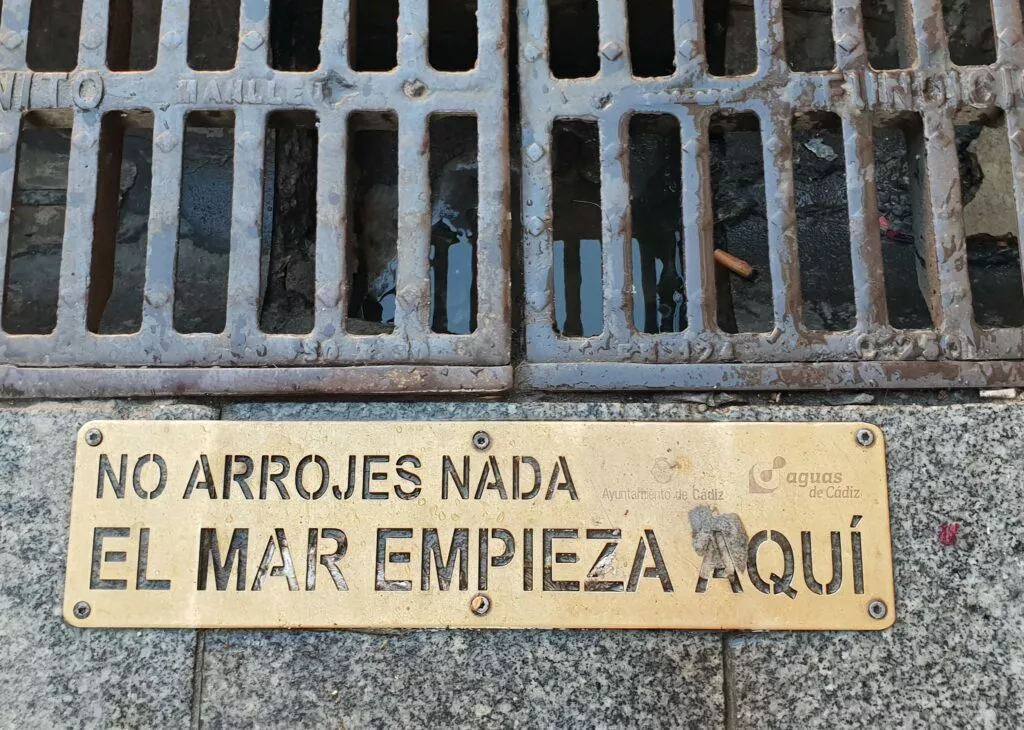
Tavira Tower
This is the tallest of all the Cadiz towers, standing 45 metres above sea level. It was built in 1730 and was the port’s official watchtower from 1778, at the height of Cadiz’s golden age, when it controlled trade with the Indies (i.e. the Americas and all the way to the Philippines).
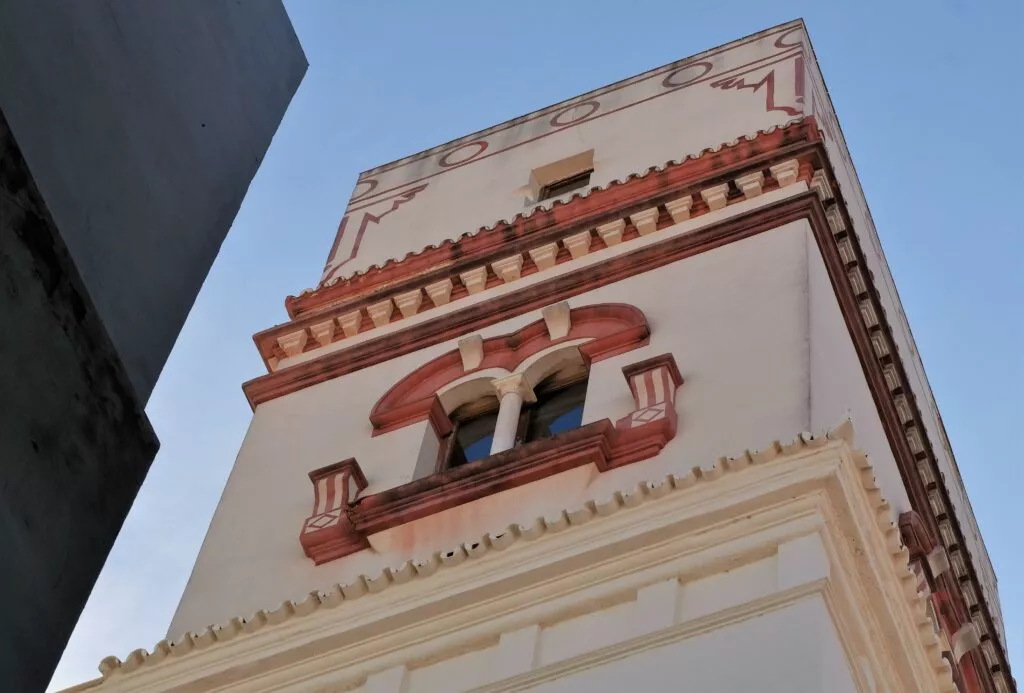
This tower is located just above the Casa-Palacio de los Marqueses de Recaño. This palace is currently being renovated and will soon house the Carnival Museum.
One last thing about the Tavira Tower: a few years ago, it was the first staircase in Spain to be equipped with a darkroom. Thanks to this technique, the whole city of Cadiz can be observed quite accurately.
A visit to the Tower and access to the famous darkroom costs €7.
Lord Byron’s platonic love for Cadiz
Cadiz is known locally as La Tacita de Plata, which means the little silver cup. The origin of this nickname comes from a legend, well… four legends born over time. My favourite is the one that says that Cadiz shines like a silver cup in the sunlight from the sea.
As for quotes, I’m keeping the one by Lord Byron, one of the many artists (writers, painters, poets, musicians) who fell in love with the city at first sight.
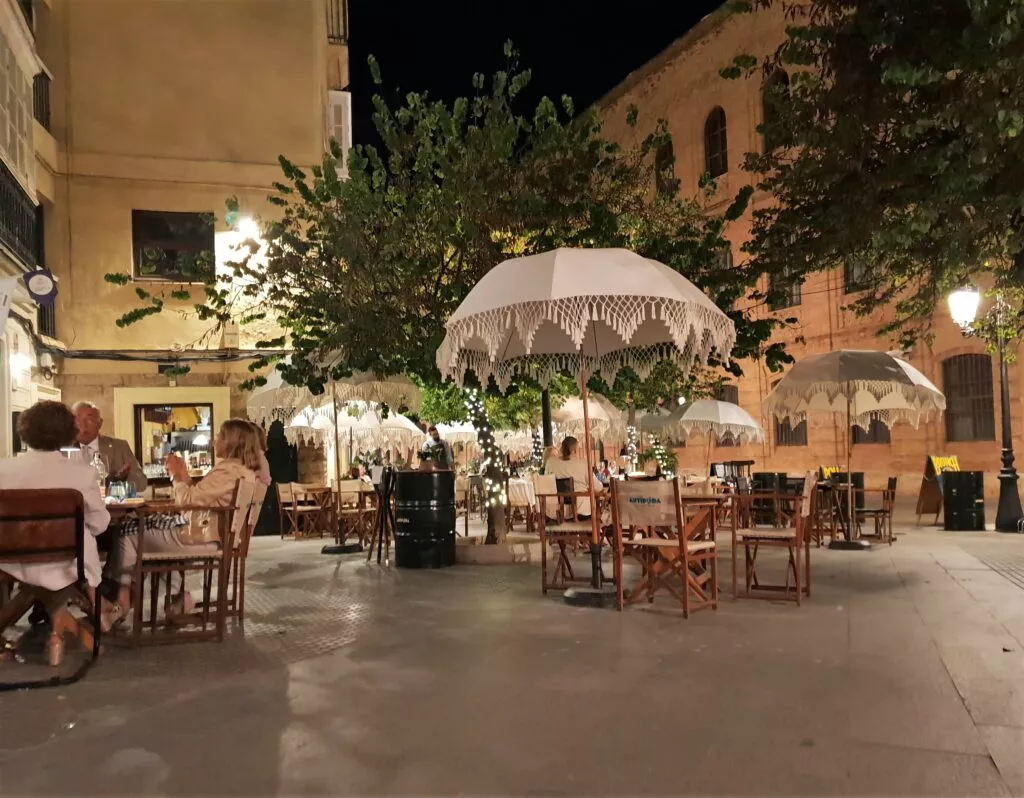
He called the city “the most beautiful and cleanest in Europe” and nicknamed it “the Siren of the Ocean“.
I understand him….it’s the city in Andalucia that I found hardest to leave. I’m talking about the gaditanos, and even more so about the famous gaditas (gaditanos in love with their city and way of life). This “intangible monument” requires a little more time than simply passing through, but if you stop and take the time to talk quite simply….the gaditanos send kindness, sharing and light into your face.
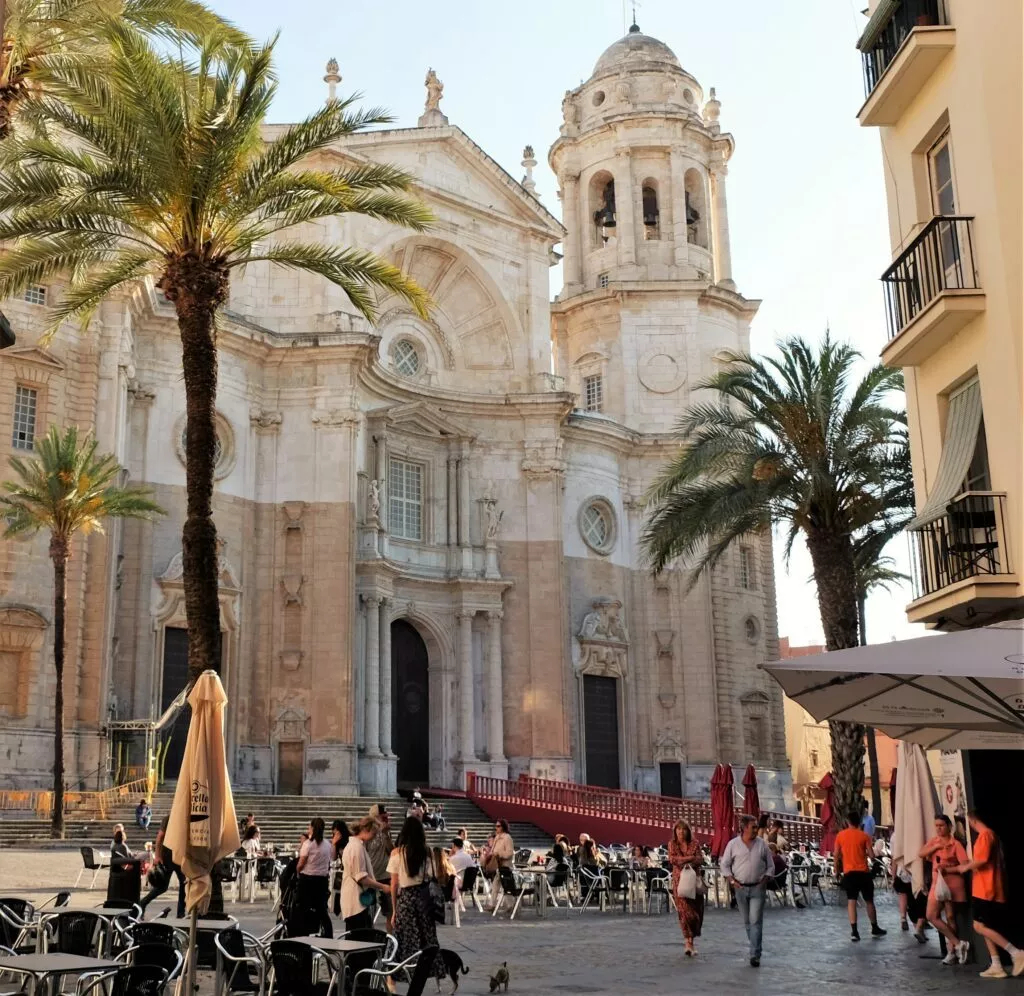
Lord Byron wrote a beautiful poem about his platonic love for this city. Using a meeting with a young gaditana as a pretext, he wrote a poem about the city: The girl of Cádiz. It says it all.
Things to do in Cadiz
Below are some ideas for things to do and see in Cadiz. You can book them online today.
Bonus: all activities can be cancelled up to 24 hours before the scheduled date.
Book accommodation in Cadiz
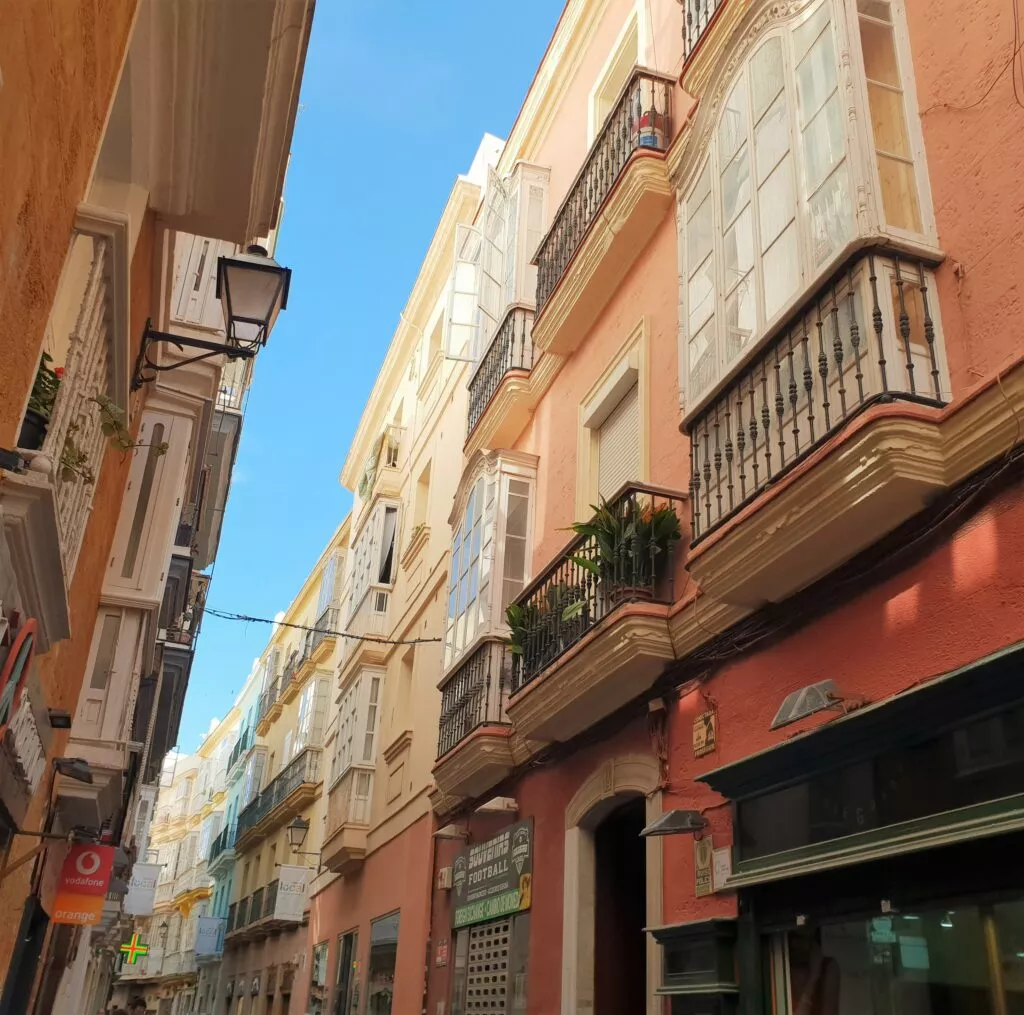
This is a small, friendly hotel in an ideal location. It’s right next to the Plaza Central, with its many bars and restaurants.
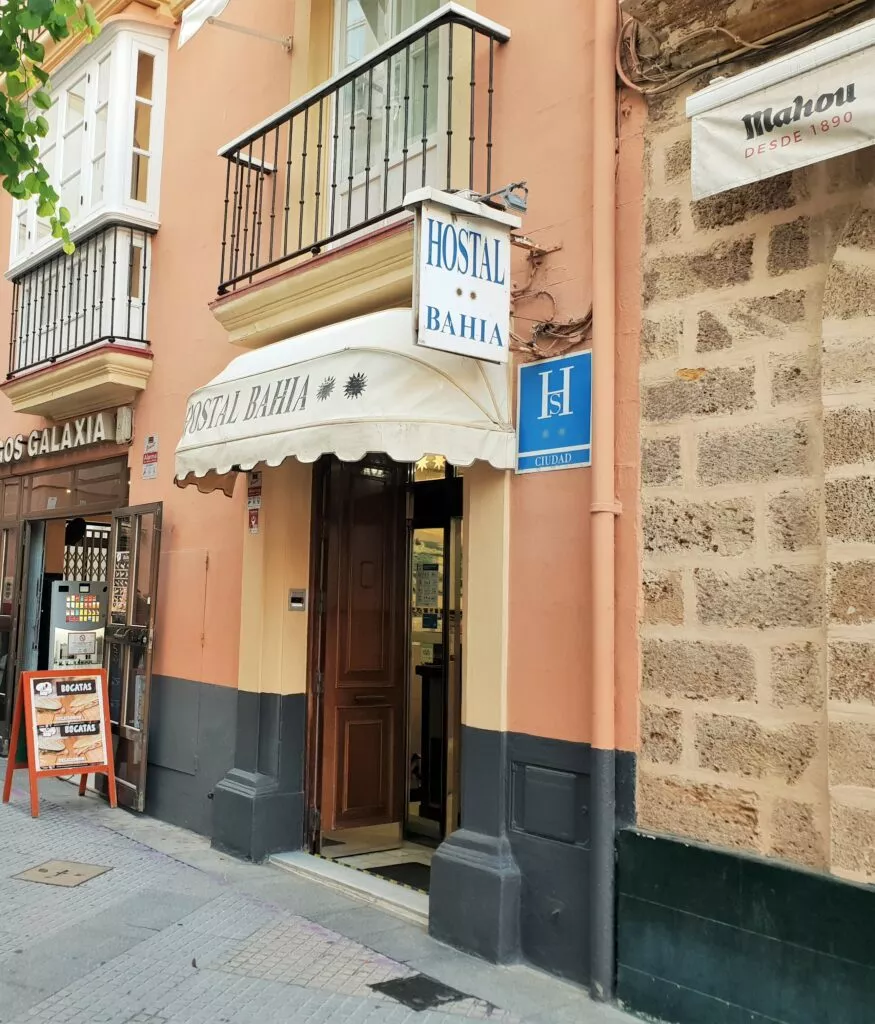
It is also 5 minutes from the station for those coming by train and 3 minutes from the Plaza Central car park.
Here’s the link to find out more and/or book the hotel: Bahia de Cadix Hotel.
Below, on the other hand, you will find live, all the hotels and accommodation available in Cadiz, after selecting your dates:
For yoga Kundalini, Chi-Kung and Shiatsu lovers, you’ll find an ideal few days yoga retreat in Barbate, little town close from Cadiz, in this link 6 days yoga retreat in Cadiz province. Helena, the instructor, speaks english.
What can you see in the province of Cadiz?
The province of Cadiz offers a huge choice of places to visit, both on the coast and inland, with many beautiful white villages. Here are just a few ideas:
The white village of Medina Sidonia
Medina Sidonia (or Medina as it’s known locally) is a white village with an intriguing name to discover:
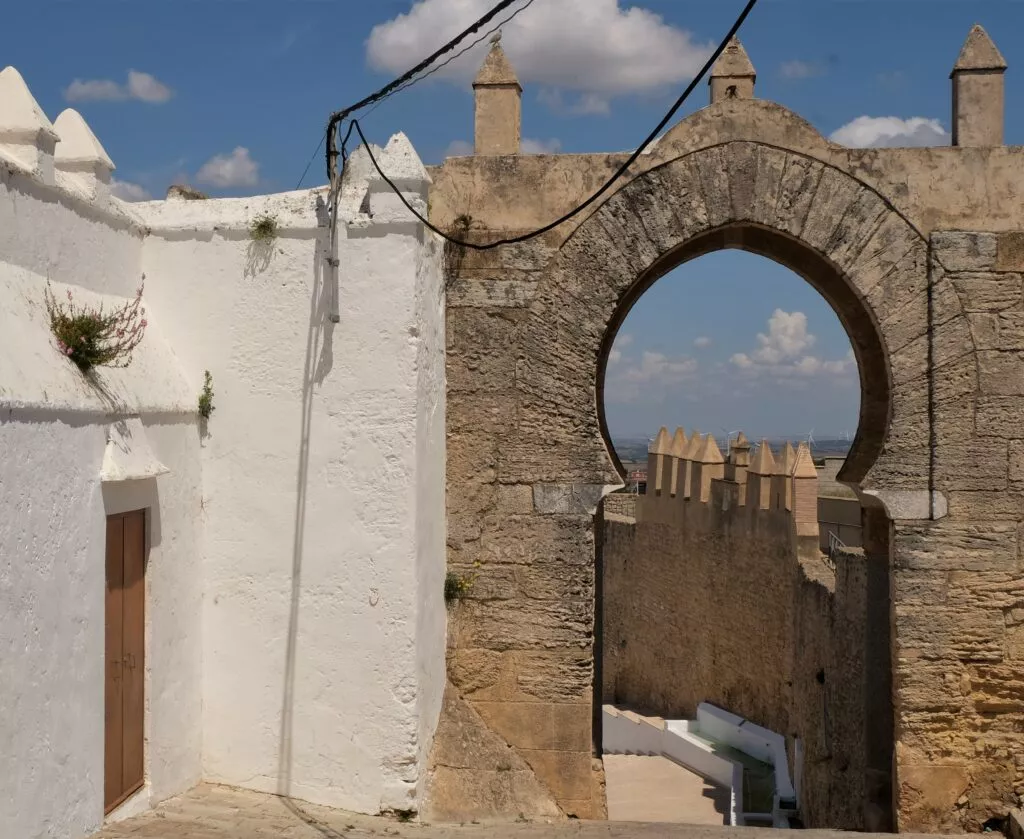
Bolonia Beach
The Bolonia beach is undoubtedly one of the most beautiful in Spain. It stretches over 4 kilometres of flour-fine sand. There is, of course, the famous Bolonia dune, which offers an incredible spectacle of nature, as well as the Roman town of Baelo Claudia, which borders the beach and is well worth a visit.
What’s more, on this beach, in a protected Natural Park, bipeds and quadrupeds sometimes share the sunbathing area.

The white village of Vejer de la Frontera
Vejer de la Frontera is a beautiful white village:
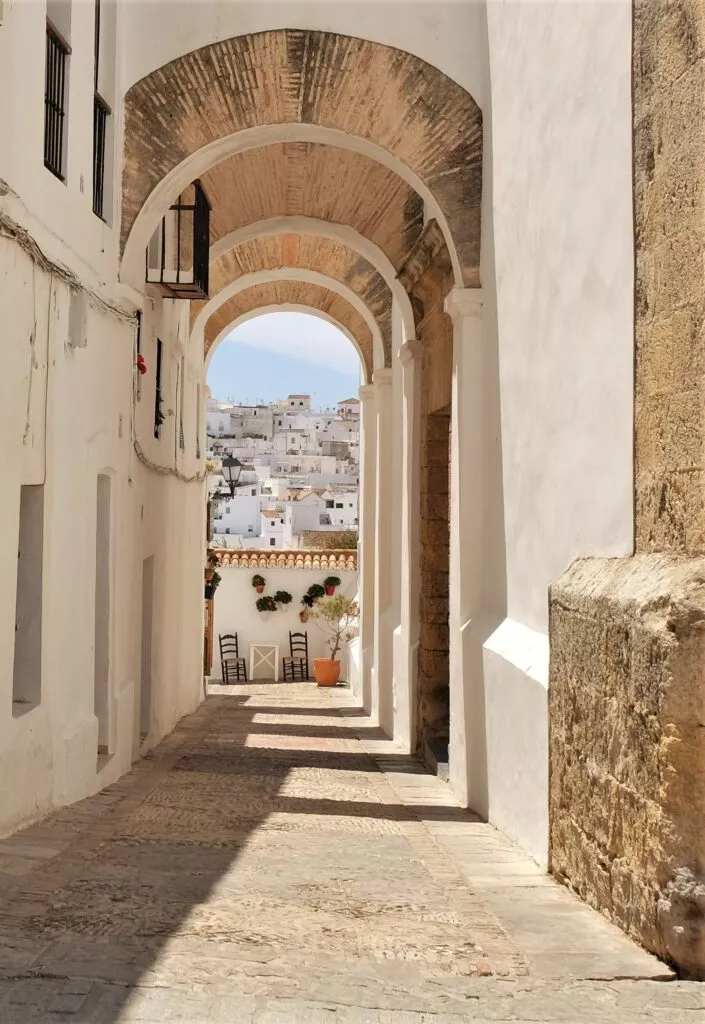
Tarifa and the surfers
Tarifa offers visitors a rich historical centre. It is also one of the world’s leading windsurfing and kitesurfing centres, and visitors can enjoy a permanent spectacle on its magnificent beaches.
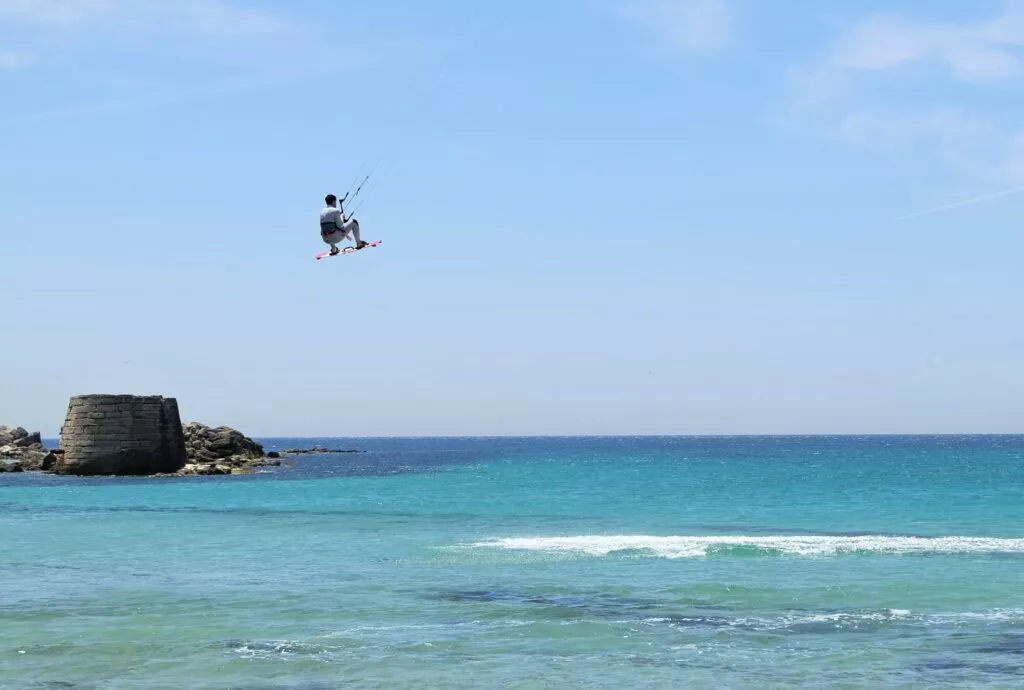
Some useful links
For those staying on the Costa del Sol and wishing to visit Andalusia, here are 8 magnificent day trips from Malaga, Torremolinos, Estepona or Benalmadena.
Easy and economical bookings
If you’re in Andalucia as part of a tour with several major cities to visit, here are some links that may be of interest to you as you continue your journey:
Discover an unknown Seville :
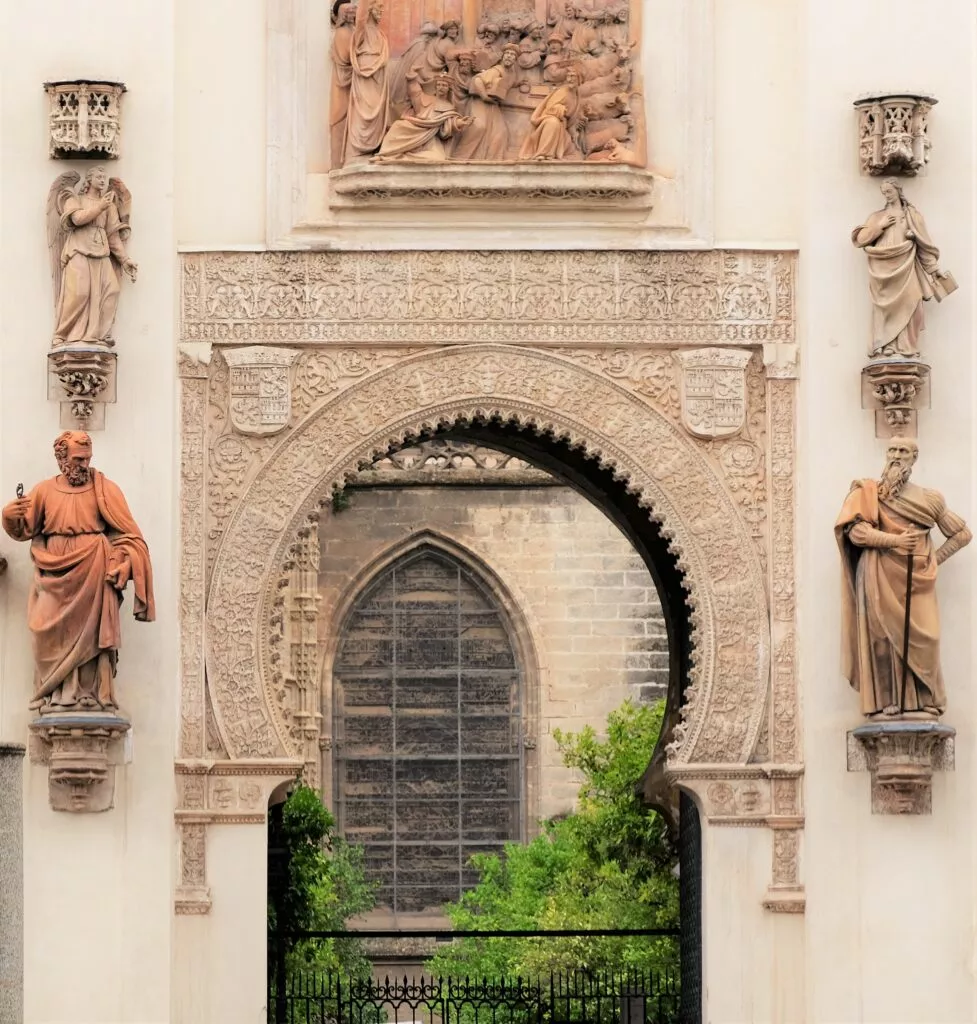
If you’re heading for the Costa del Sol, here’s a link to what you need to see in Malaga:

If you’re visiting Granada, check out the Albaicin and Sacromonte districts:
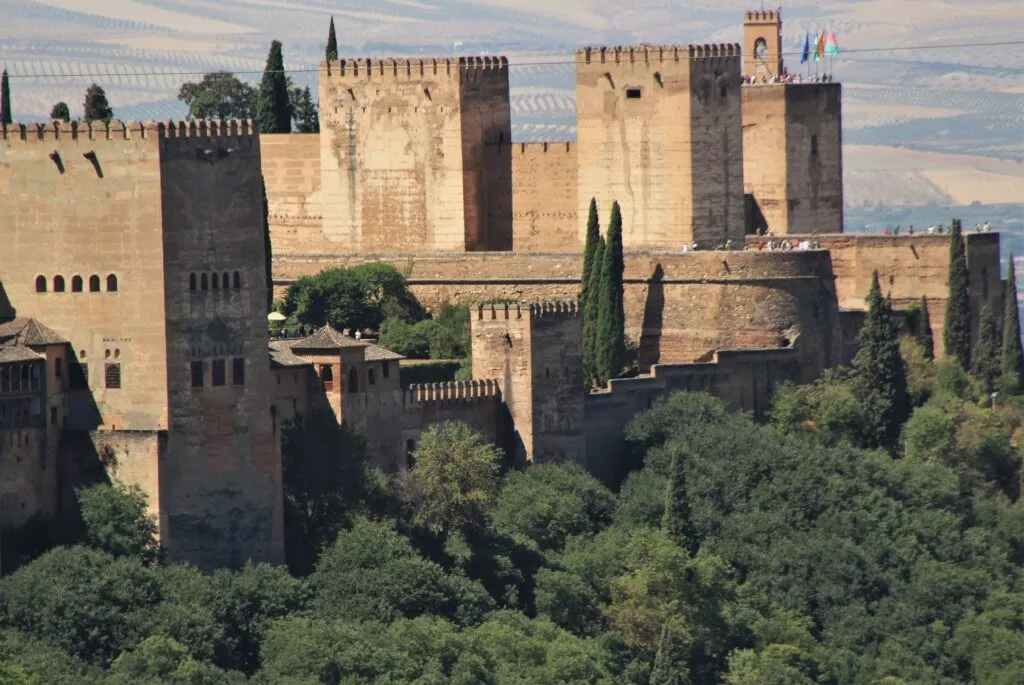
And of course, discover Cordoba, the Caliphate city, and the Juderia district
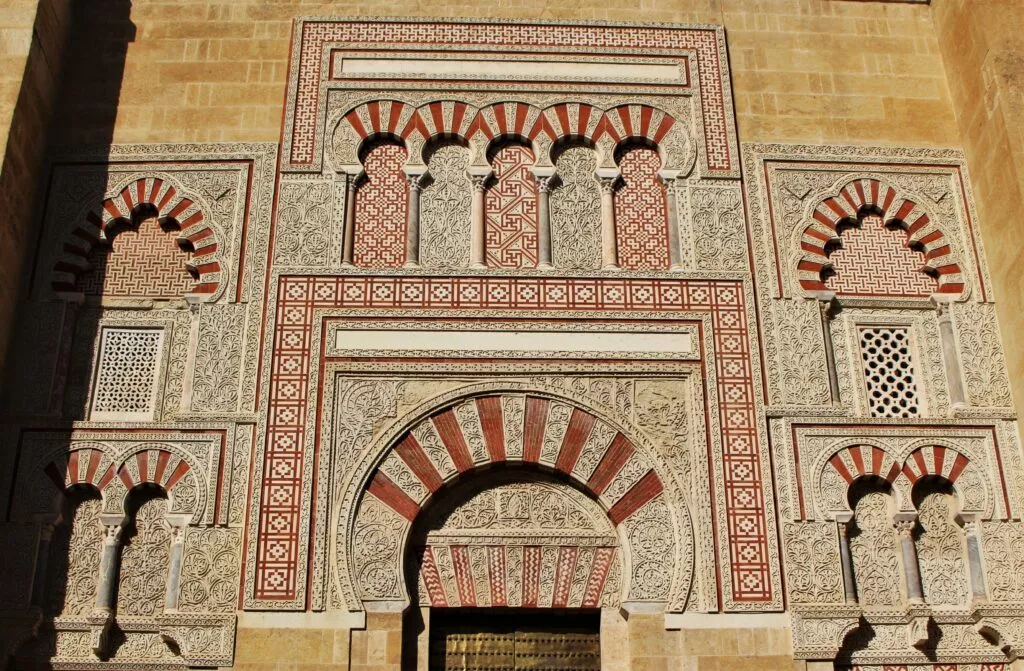
Discover more of Andalucia’s beautiful sites in the Andalucia blog pages.
Here is the link to receive our andaluciamia.com blog newsletter
The latest articles on Andalucia
-
Interactive map of Andalucia with best places to see
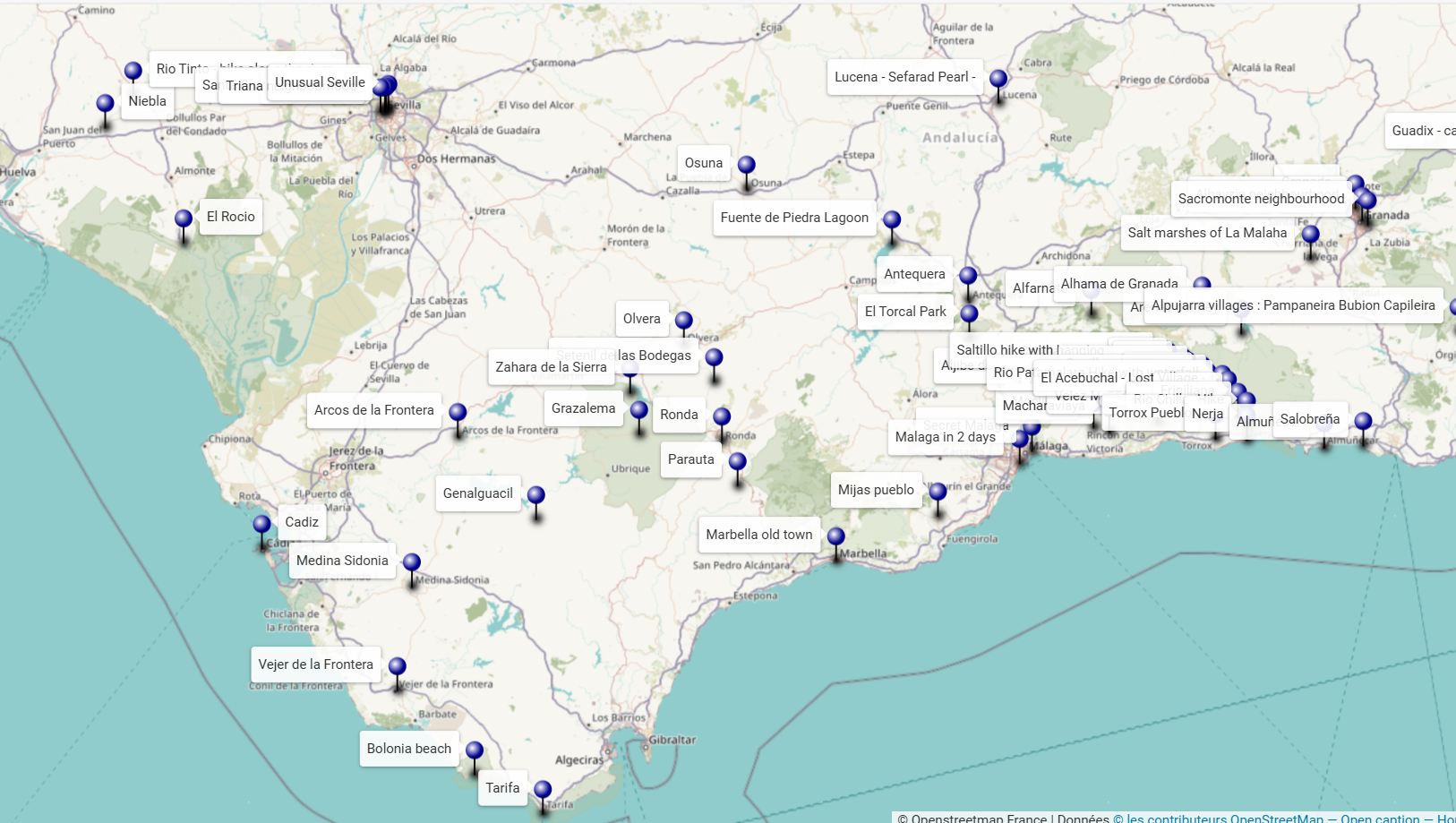
An interactive map of Andalucia to discover the sites to see around your holiday destination or to prepare a tour or road-trip.
-
Andalusia off the beaten track : 18 gems
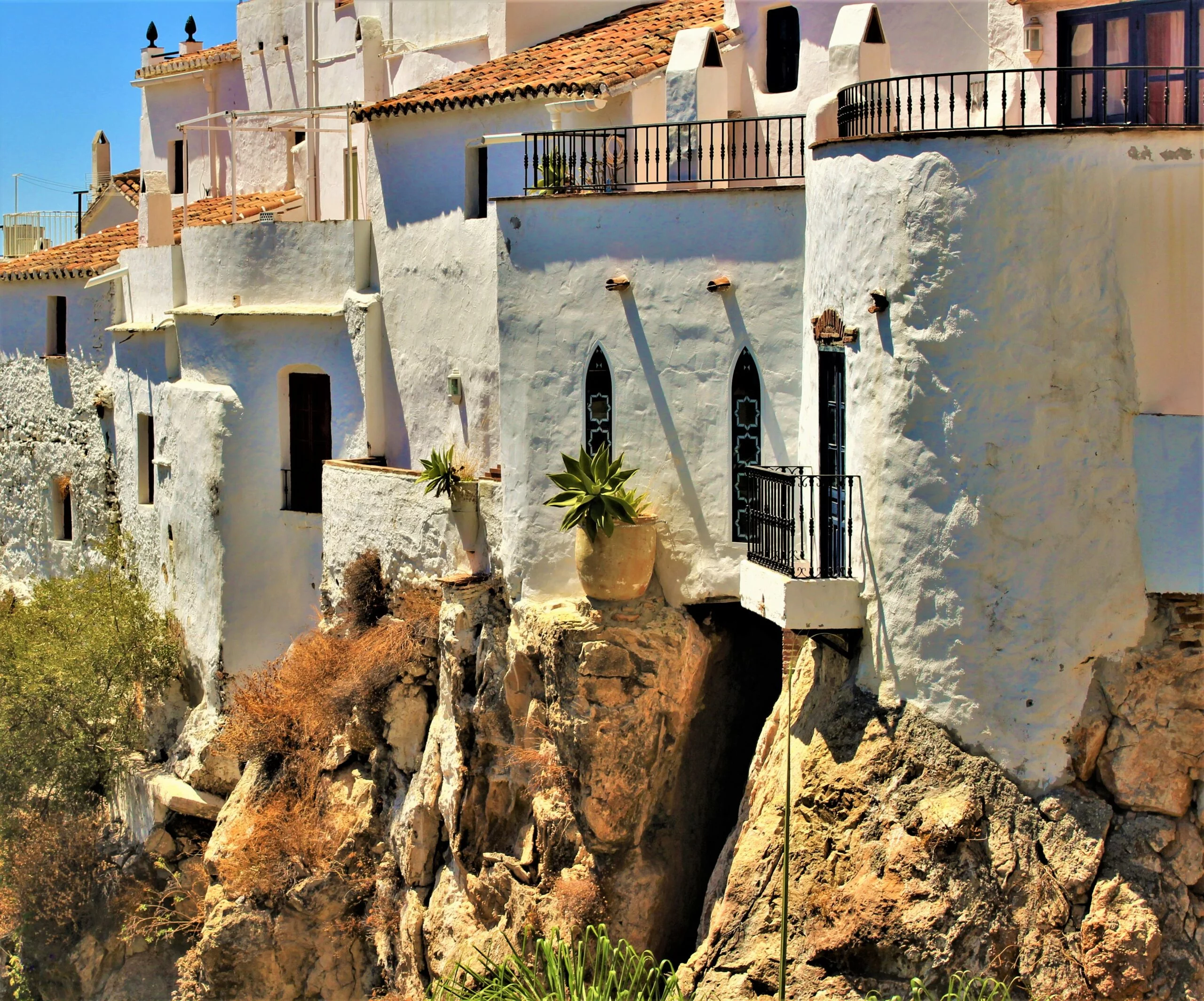
Let’s immediately set off to discover an Andalusia off the beaten track. There are many wonders to discover.
-
19 Most beautiful white villages in Andalusia
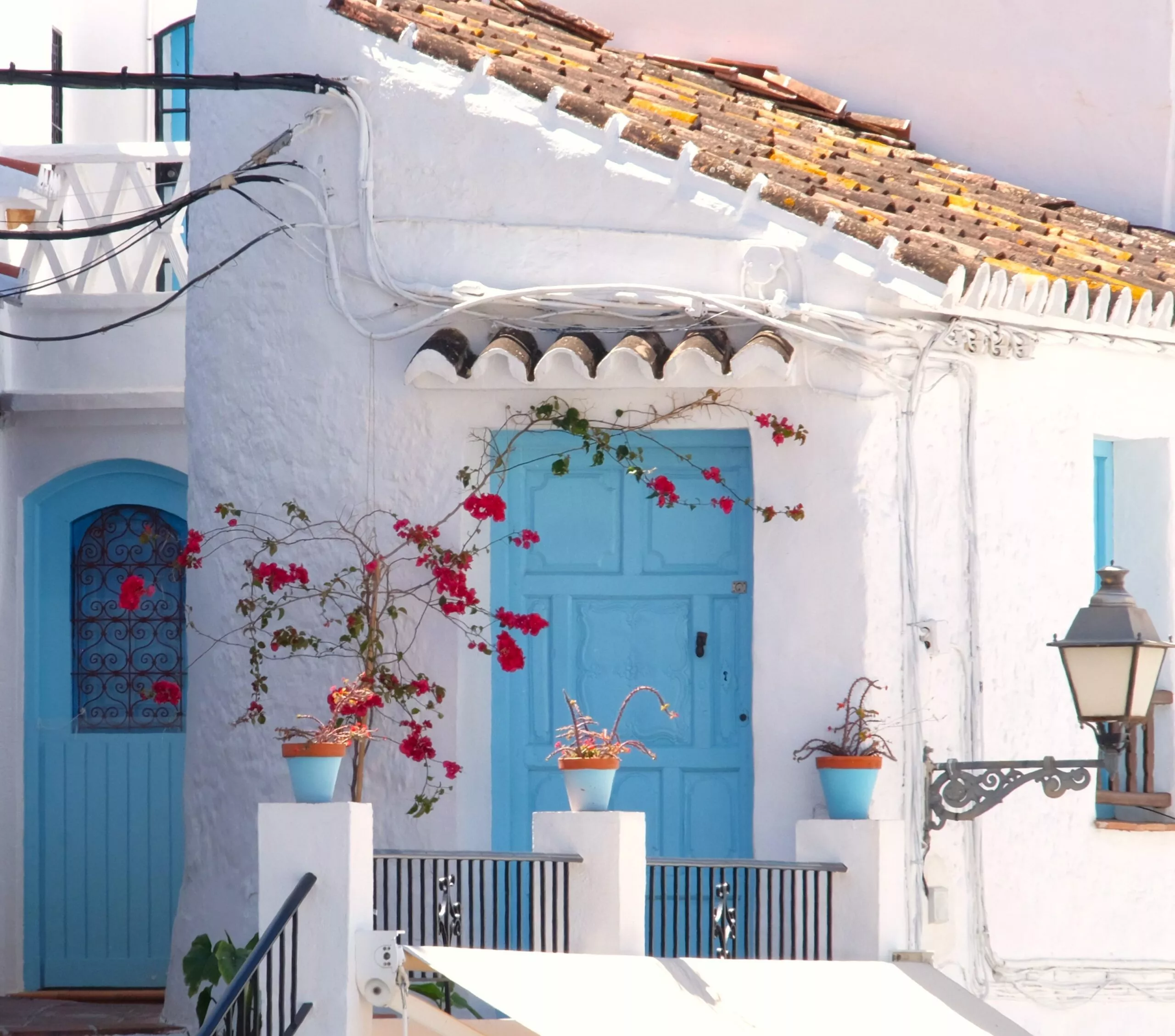
Discovering the most beautiful white villages of Andalusia. These villages are the only ones to be part of the Pueblos más bonitos de España.
-
Unusual Andalusia – 15 Very Surprising Places –
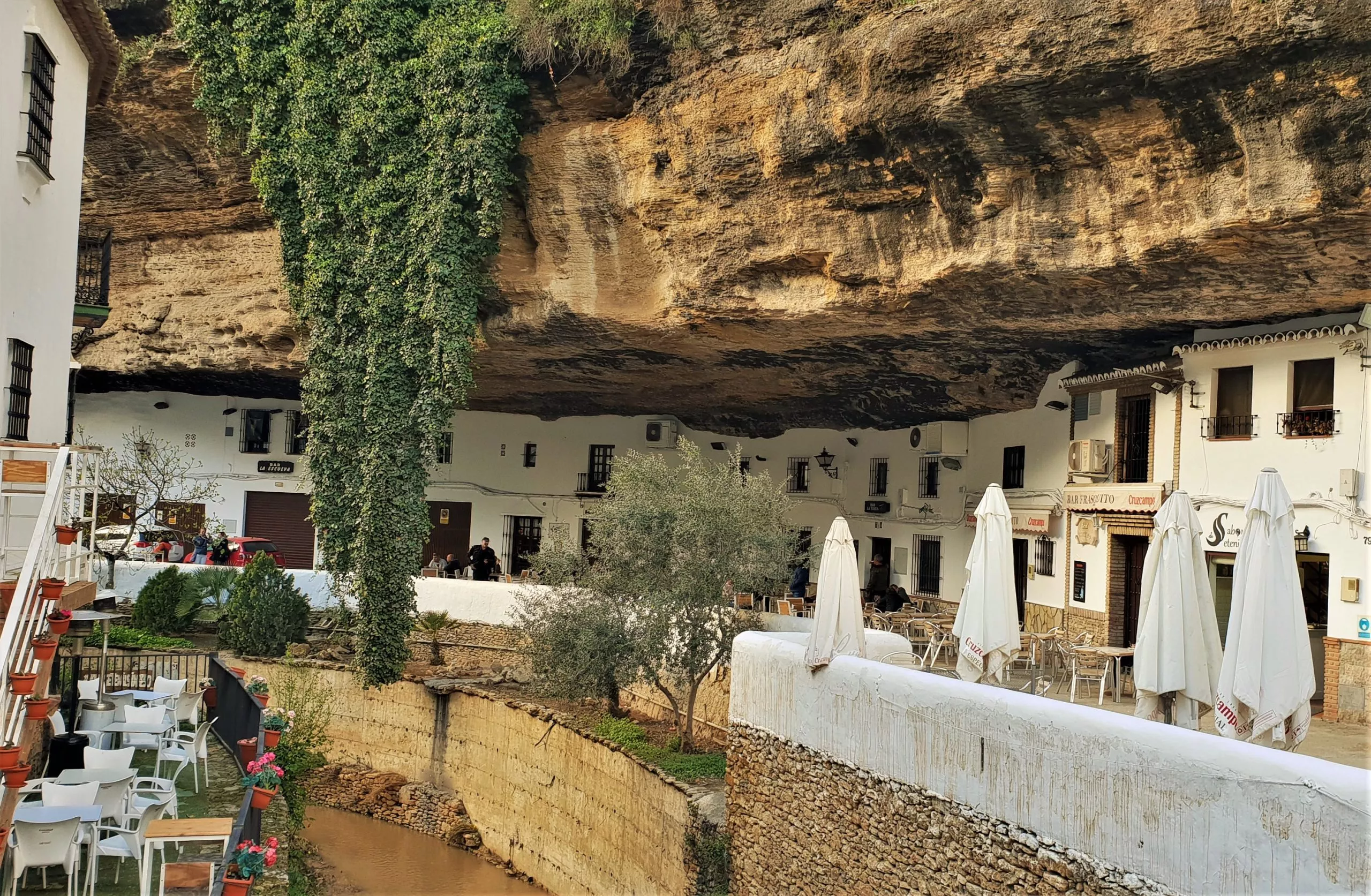
Unusual Andalusia: discover the most surprising and wonderful places in southern Spain.
